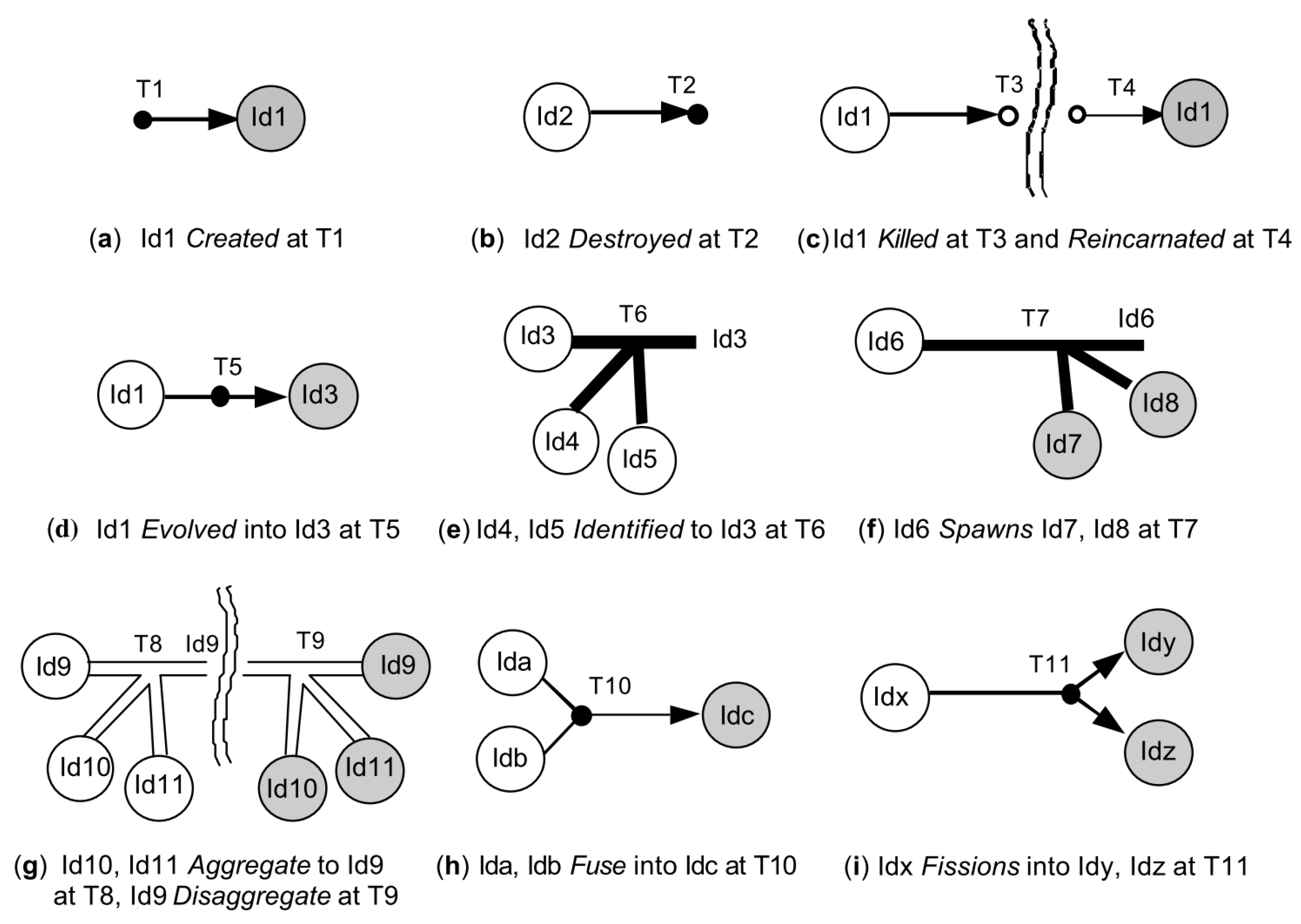Pyramidal Framework: Guidance for the Next Generation of GIS Spatial-Temporal Models
Abstract
1. Introduction
2. Background of Spatio-Temporal Modeling and New Challenges
2.1. Short Evolution of Spatio-Temporal Models
2.2. Limitations and Challenges
3. Levels of Functionality
3.1. A Pyramidal Structure of Functionality
- Level 1—Temporal snapshots: The world is viewed as a succession of time-ordered snapshots of spatial object configurations. This modeling helps one to answer a basic question such as “Are there changes?”.
- Level 2—Object change: “The focus shifts from the temporal sequences of objects, their attributes and relationships, to the changes that can happen to objects, attributes, and relationships” [2]. Now, one can answer the following question: “What are the changes?”.
- Level 3—Event and Process: Compared to level 2, level 3 gives an explicit representation of the phenomena by introducing the concepts of event and process. Spatio-temporal phenomena are treated as a collection of happenings. Events and processes are considered distinct entities.
- Level 4—Identity: Identity is the certainty of being able to continue to refer to the object consistently despite its changes. The concepts related to this need are already known and well-identified. However, we believe that they are not fully exploited and that there is still potential for improvement. First, a fine-grained modeling of identity should explicitly distinguish the concept of identity from the one of identification. Secondly, managing the identity of geographic objects also raises several issues in terms of usages and points of view. Indeed, the identity of the same geographical object will not necessarily be the same depending upon the domain in which it is studied. Consequently, the object identity must also be defined according to the users.
- Level 5—Causality: Causal analysis is essential when studying geographical phenomena, because it serves to justify them, to give them meaning. It turns out to be a foundational element of logical reasoning. It is from this level of modeling that we can fully answer the question: “Why changes have occurred?”. Equipped with this, it becomes possible to document the origin of the modifications. Moreover, in the case of multiple interpretations, the representation of the cause may be the factor that justifies one choice of interpretation over another.
- Level 6—Interpretation: the same event is not necessarily perceived in a similar way by different people and can consequently induce different meanings. Indeed, the way a human perceives a geographical object, or a fact, depends on his experience, his field of expertise (e.g., geographer, architect, urban planner), and the context of the study. In addition, relationships between events such as causal relations are often a matter of subjectivity and understanding. For example, two experts do not always approach identical data in the same way. Therefore, a spatio-temporal model managing interpretation should support dissimilar descriptions and interpretations of the same objects and events. It should therefore be able to handle multiple contextual viewpoints on the same real-world occurrences.
3.2. Level 1: Implicit Representation of Changes
3.3. Level 2: Explicit Representation of Changes
3.4. Level 3: Explicit Representation of the Phenomena Leading of Changes
Analysis
- Models that do not integrate the notion of the object as an entity that persists over time (e.g., cities, packages, cars). Furthermore, they do not provide explicit relationships between events since they only represent them as a simple sequence of temporal features that follow one another. In this category, we find models such as TEMPEST [33] or ESTDM [34].
- Models that are explicitly adding object-event and event-event relationships, but are not differentiating between events and processes. Therefore, they do not express links between the two (e.g., process-event). GEM, presented earlier, is a good illustration of this.
- Models that make the difference between event and process. In these models, the relationship between process and event is expressed through an aggregation relationship. For example, events can be seen as an assembly of processes, such as in the event-oriented approach [35] and the spatio-temporal processes framework [107] where events are defined as a set of processes that transform entities. In [117], events consist of multiple processes.
3.5. Level 4: Explicit Representation of Identity
3.5.1. Fundamentals of Identity: An Individual’s Identity and Preservation of Identity through Time
3.5.2. Identity of Objects and Computer Representation
3.5.3. Filiation Relation
3.5.4. Identity in GIScience
3.5.5. Analysis and Proposals
3.6. Level 5: Explicit Representation of Causality
3.6.1. Causality in Philosophy and Science
3.6.2. Cause in GIScience
3.6.3. Characteristics of the Cause
3.6.4. Examples of Causality Modeling in Geographic Sciences
3.6.5. Analysis
- The cause is a challenging concept to model. Indeed, the various causality models and the few given examples indicate that this concept is relatively delicate to model. One of the difficulties may be that identical facts can be interpreted differently. One should also add the complexity brought by the multiplicity of causes and effects. Indeed, an effect is often the result of several causes or a series of nested causes.
- The cause is closely related to the concepts of event and process. Indeed, the event (or the process) can be considered as the element that produces the cause. In this case, the cause serves, for example, as a justification for the occurrence of a geographical phenomenon. Therefore, the use of the concept of causality can only be fully realized through a model that explicitly manages the events (and/or processes). We can cite Galton’s models as an example (Section 3.6.4).
- Causal relations can improve the representation of interactions between geographic phenomena. Causality represents a form of interaction between different processes that act on geographic objects. Studying these interactions is essential for a better understanding of the real world. It enables to build and test hypotheses, derive laws, or improve simulation models. For example, it is important for scientists to know whether two geographical processes occurring in the same spatio-temporal area can have a causal relation (e.g., when one contributes to generating the other).
- Causal modeling can be useful in the area of decision-making. Since the causal relationship is unidirectional, causes can be inferred from effects. This helps, among other things, to improve the understanding of the origin of changes. Thus, the study and modeling of causes can help to deduce or predict future changes. For example, a spatio-temporal GIS capable of reconstructing a causal chain would allow the user to anticipate or accurately assess the possible consequences of an action, a process, or the occurrence of an event on the evolution of the studied geographical phenomenon.
- Causal relations must be interpreted in a context. As Allen [169] points out, causal relations are more a matter of human perception than real-world properties. As such, they are highly subject to interpretation. For this reason, causal relations only hold in relation to the context in which they occur. Ideally, a comprehensive causal model should provide mechanisms to represent knowledge about the involvement of agents in cause-effect relationships.
- The concept of causality is under-exploited. Despite convincing results such as the work of Mau et al. [186] or the one of Bleisch et al. [172,191], the concept of causality is currently under-exploited in actual spatio-temporal models. More recently, Ghazouani et al. [192] have shown, through a practical case, that the modeling of causes allows for the interpretation of the consequences of geographical phenomena. However, current spatio-temporal models represent causality in a relatively simple way without considering all the related concepts. We believe that it is possible to improve this representation by integrating the previously mentioned concepts such as the notions of direct and indirect causes or temporal constraints. Moreover, the expressiveness of the model would also be improved by integrating the concepts developed by Galton [102,104].
3.7. Level 6: Allowing for Multiple Interpretations
3.7.1. Interpretation Concept
3.7.2. Notion of Context
3.7.3. Notion of Point of View
3.7.4. Context and Point of View
3.7.5. Synthesis
4. Discussion
- Identity is a key element in keeping track of the evolution of objects, so it naturally complements the first three levels. Furthermore, the need for causality and interpretation generally requires advanced identity management. Identity must therefore be explicitly expressed to take full advantage of these two upper levels. Moreover, fine-grained identity management will facilitate the encoding of filiation relationships. It will therefore help to better detect or improve the understanding of the data evolution.
- Causality is a notion that allows a set of concepts such as process, event, state, and object to be assembled, with links between them. Thus, the cause must be placed at least after the explicit representation of phenomena. This type of representation is still a challenge since few spatio-temporal models explicitly exploit this concept. Moreover, with better integration and use of the concept of causality, several spatio-temporal analyses can be derived and further developed. For example, the spatio-temporal relationships between oceanic eddies and tropical cyclones could be characterized differently (this example is inspired by [256]). In addition, representing geographic information in the form of causal chains could significantly improve the spatio-temporal visualization of complex geographic phenomena.
- Interpretation constitutes an interesting level for the following cases:
- -
- The first case is when we do not know precisely what happened. Indeed, historical events are subject to interpretation. Thus, making a few hypotheses is often necessary to reconstruct past states. This is the typical case of urban archaeology that we mentioned previously. For example, experts seek to reconstruct the changes that a building has undergone over time. However, they do not know precisely what happened, as information is missing. Thus, each expert proposes a solution that may be different from one another. Sometimes the answers are complementary, sometimes they are conflicting.
- -
- This second case is like the first one, but the purpose is to represent hypotheses of future evolution. Indeed, a spatio-temporal model is not necessarily limited to past data. For example, in the context of urban planning, it is essential to handle multiple scenarios of future city developments, as well as to process projected data.
- -
- The third case concerns experts from different domains who need to model their diverse points of view on the studied objects. The interpretation is useful to establish a consensus and identify the divergent opinions among the experts.
- Categories are not mutually exclusive, rather they are complementary to each other. Indeed, a spatio-temporal model can belong simultaneously to multiple levels. For example, a model could explicitly represent the type of changes together with the concepts of events/processes. In this case, such a model belongs to both levels 2 and 3.
- Despite the existence of an interrelation between the levels, the higher levels do not necessarily include the lower levels. For example, as mentioned in Section 3.4, some level 3 models such as TEMPEST do not explicitly name transformations and therefore do not include level 2.
- The ordering of the levels is not absolute. The pyramid is primarily to help and guide the design of new models or to enhance existing ones. For example, it can serve as a conceptual basis for the upgrade of spatio-temporal models by adding new features. The pyramid can also be considered as a reading grid to organize the spatio-temporal models. However, it should be noted that certain spatio-temporal models such as the triad framework [31] do not fit into its categories.
- We would like to position the pyramidal framework in relation to the notion of temporal scale. Indeed, when designing spatio-temporal models, the selection of the temporal scale influences a part of the modeling choices. However, the pyramid concepts (e.g., temporal snapshots, object change, event, process, identity, causality, interpretation) can be explored at different temporal scales. For example, in the context of urban data, the concept of the event can be used to study the data at different temporal granularities. The evaluation of the impact of urbanization can be done on an annual scale (decrease of arable lands, the increase of impermeable surfaces, etc.). While in the case of Smart Cities, data can be analyzed in real-time like public transport data (bus stops and departures, road accidents, etc.). Consequently, the notion of temporal scale is more transversal and covers all the levels of the pyramidal framework.
5. Concluding Remarks and Future Research Opportunities
- In terms of identity integration:
- -
- The definition of identity must include all the constituents of the geographical object, namely spatiality, temporality, and thematic.
- -
- Imposing a pre-established list of transformations to manage identity change is insufficient for realistic modeling. Indeed, the attribution of the identity must be variable and be made according to the field of application.
- -
- The concept of identity only makes sense in a context and depends on the users’ point of view.
- In terms of causality integration:
- -
- Lower-level models cannot track the causes behind the evolution of geographical objects. This can only be achieved by explicitly incorporate causal mechanisms.
- -
- Current spatio-temporal models represent causality in a relatively simple way without considering all related concepts. We believe that it is possible to improve this representation by integrating concepts such as direct and indirect causes, or temporal constraints. This could enhance the expressiveness of spatio-temporal modeling.
- -
- Causal relations can improve the representation of interactions between geographical phenomena. In addition, the study and modeling of causes can help deduce or predict future changes, thus causal modeling can be useful in the area of decision-making.
- In terms of interpretation integration:
- -
- The concepts of identity and causality are intricately linked to the one of interpretation. Indeed, the concept of identity depends on the point of view of the users, and causality relations are valid only in the context in which they have been defined. However, the use of interpretation has a much broader scope.
- -
- Interpretation is particularly useful in the area of problem-solving, especially when the methods of analysis and the understanding of the same subject by different experts diverge. In this case, the point of view helps to take into account the diversity of experts’ opinions.
- -
- The interpretation is also relevant when considering different alternatives of evolution (scenarios). This is particularly valuable in the context of the historical studies of a city or in urban planning.
- -
- The concept of context is essentially limited to the user’s physical environment. It could be extended to incorporate the research environment and methodology in which the study is conducted.
Author Contributions
Funding
Institutional Review Board Statement
Informed Consent Statement
Data Availability Statement
Conflicts of Interest
References
- Nara, A. Space-Time GIS and Its Evolution. In Comprehensive Geographic Information Systems; Huang, B., Ed.; Elsevier: Oxford, UK, 2018; pp. 287–302. [Google Scholar] [CrossRef]
- Worboys, M. Event-oriented approaches to geographic phenomena. Int. J. Geogr. Inf. Sci. 2005, 19, 1–28. [Google Scholar] [CrossRef]
- Siabato, W.; Claramunt, C.; Ilarri, S.; Manso-Callejo, M.Á. A Survey of Modelling Trends in Temporal GIS. ACM Comput. Surv. 2018, 51, 30. [Google Scholar] [CrossRef]
- Yuan, M. Temporal GIS and Spatio-Temporal Modeling. In Proceedings of the Third International Conference Workshop on Integrating GIS and Environment Modeling, Santa Barbara, CA, USA, 21–25 January 1996; pp. 21–26. [Google Scholar]
- Raza, A. Object-Oriented Temporal GIS for Urban Applications. Ph.D. Thesis, University of Twente, Enschede, the Netherlands, 2001. [Google Scholar]
- El-Geresy, B.A.; Abdelmot, A.I.; Jones, C.B. Spatio-Temporal Geographic Information Systems: A Causal Perspective. In Proceedings of the East European Conference on Advances in Databases and Information Systems, Bratislava, Slovakia, 8–11 September 2002; pp. 191–203. [Google Scholar]
- Pelekis, N.; Theodoulidis, B.; Kopanakis, I.; Theodoridis, Y. Literature review of spatio-temporal database models. Knowl. Eng. Rev. 2004, 19, 235–274. [Google Scholar] [CrossRef]
- Yuan, M.; Hornsby, K. Computation and Visualization for Understanding Dynamics in Geographic Domains: A Research Agenda; CRC Press: Boca Raton, FL, USA, 2008. [Google Scholar] [CrossRef]
- Goodchild, M.F. Prospects for a Space-Time GIS: Space-Time Integration in Geography and GIScience. Ann. Assoc. Am. Geogr. 2013, 103, 1072–1077. [Google Scholar] [CrossRef]
- Yuan, M. Space-Time GIS. In Oxford Bibliography of Geography; Warf, B., Ed.; Oxford University Press: New York, NY, USA, 2016; p. 18. [Google Scholar] [CrossRef]
- Tomlinson, R. A Geographic Information System for Regional Planning. J. Geogr. (Chigaku Zasshi) 1968, 78, 45–48. [Google Scholar] [CrossRef]
- Hägerstrand, T. What about people in Regional Science? Pap. Reg. Sci. Assoc. 1970, 24, 7–24. [Google Scholar] [CrossRef]
- Gadia, S.K.; Vaishnav, J.H. A Query Language for a Homogeneous Temporal Database. In Proceedings of the Fourth ACM SIGACT-SIGMOD symposium on Principles of database systems, Portland, OR, USA, 25–27 March 1985; pp. 51–56. [Google Scholar]
- Snodgrass, R.; Ahn, I. A Taxonomy of Time Databases. In Proceedings of the ACM Sigmod Record, Austin, TX, USA, 28–31 May 1985; pp. 236–246. [Google Scholar]
- Snodgrass, R.T. Temporal Databases. IEEE Comput. 1986, 19, 35–42. [Google Scholar] [CrossRef]
- Gadia, S.K.; Yeung, C.-S. A generalized model for a relational temporal database. ACM SIGMOD Rec. 1988, 17, 251–259. [Google Scholar] [CrossRef]
- Langran, G.; Chrisman, N.R. A Framework for Temporal Geographic Information. Cartogr. Int. J. Geogr. Inf. Geovisualization 1988, 25, 1–14. [Google Scholar] [CrossRef]
- Langran, G. A review of temporal database research and its use in GIS applications. Int. J. Geogr. Inf. Syst. 1989, 3, 215–232. [Google Scholar] [CrossRef]
- Langran, G. Issues of Implementing a Spatiotemporal System. Int. J. Geogr. Inf. Sci. 1993, 7, 305–314. [Google Scholar] [CrossRef]
- Kay, A.C. The early history of Smalltalk. In Proceedings of the Second ACM SIGPLAN Conference on History of Programming Languages, Cambridge, MA, USA, 20–23 April 1993; pp. 511–598. [Google Scholar]
- Capretz, L.F. A brief history of the object-oriented approach. ACM Sigsoft Softw. Eng. Notes 2003, 28, 6. [Google Scholar] [CrossRef]
- Black, A.P. Object-oriented programming: Some history, and challenges for the next fifty years. Inf. Comput. 2013, 231, 3–20. [Google Scholar] [CrossRef]
- Egenhofer, M.J.; Frank, A.U. Object-oriented databases: Database requirements for GIS. In Proceedings of the International Geographic Information Systems (IGIS) Symposium (IGIS’87), Arlington, VA, USA, 15–18 November 1987; pp. 189–211. [Google Scholar]
- Egenhofer, M.J.; Frank, A.U. Object-Oriented Modeling in GIS: Inheritance and Propagation. In Proceedings of the Ninth International Symposium on Computer-Assisted Cartography—Auto-Carto 9, Cartography, Baltimore, MD, USA, 2–7 April 1989; pp. 588–598. [Google Scholar]
- Egenhofer, M.J.; Frank, A. Object-Oriented Modeling for GIS. J. Urban Reg. Inf. Syst. Assoc. 1992, 4, 3–19. [Google Scholar]
- Price, S. Modelling the temporal element in land information systems. Int. J. Geogr. Inf. Syst. 1989, 3, 233–243. [Google Scholar] [CrossRef]
- Worboys, M.F.; Hearnshaw, H.M.; Maguire, D.J. Object-oriented data modelling for spatial databases. Int. J. Geogr. Inf. Syst. 1990, 4, 369–383. [Google Scholar] [CrossRef]
- Worboys, M.; Hearnshaw, H.; Maguire, D. Object-oriented data and query modelling for geographical information systems. In Proceedings of the Fourth International Symposium on Spatial Data Handling, Zurich, Switzerland, 23–27 July 1990; pp. 679–688. [Google Scholar]
- Worboys, M.F. Object-oriented approaches to geo-referenced information. Int. J. Geogr. Inf. Syst. 1994, 8, 385–399. [Google Scholar] [CrossRef]
- Wachowicz, M. Object-Oriented Design for Temporal GIS; CRC Press: London, UK, 1999. [Google Scholar] [CrossRef]
- Peuquet, D.J. It’s About Time: A Conceptual Framework for the Representation of Temporal Dynamics in Geographic Information Systems. Ann. Assoc. Am. Geogr. 1994, 84, 441–461. [Google Scholar] [CrossRef]
- Yuan, M. Wildfire conceptual modeling for building GIS space-time models. In Proceedings of the GIS/LIS’94, Phoenix Civic Plaza, Phoenix, AZ, USA, 25–27 October 1994; pp. 860–869. [Google Scholar]
- Peuquet, D.; Wentz, E. An approach for time-based analysis of spatiotemporal data. In Proceedings of the 6th International Symposium on Spatial Data Handling, Edinburgh, UK, 5–9 September 1994; pp. 489–504. [Google Scholar]
- Peuquet, D.J.; Duan, N. An Event-Based Spatiotemporal Data Model (ESTDM) for Temporal Analysis of Geographical Data. Int. J. Geogr. Inf. Syst. 1995, 9, 7–24. [Google Scholar] [CrossRef]
- Claramunt, C.; Thériault, M. Managing Time in GIS: An Event-Oriented Approach. In Recent Advances in Temporal Databases; Springer: London, UK, 1995; pp. 23–42. [Google Scholar] [CrossRef]
- Renolen, A. History graphs: Conceptual modeling of spatio-temporal data. GIS Front. Bus. Sci. 1996, 2, 46. [Google Scholar]
- Renolen, A. Conceptual Modelling and Spatiotemporal Information Systems: How to Model the Real World. In Proceedings of the SCANGIS’97: 6th Scandinavian Research Conference on Geographical Information Systems, Stockholm, Sweden, 1–3 June 1997; pp. 1–22. [Google Scholar]
- Renolen, A. Modelling Spatiotemporal Information: The Spatiotemporal Object Model; Norwegian University of Science and Technology: Trondheim, Norway, 1997; Available online: http://citeseerx.ist.psu.edu/viewdoc/summary?doi=10.1.1.56.3334 (accessed on 21 March 2021).
- Renolen, A. Concepts and Methods for Modelling Temporal and Spatiotemporal Information; Norwegian University of Sciences and Technology: Trondheim, Norway, 1999; Available online: www.emap.no/docs/ThesisAgnarRenolen.pdf (accessed on 21 March 2021).
- Galton, A. Space, Time, and the Representation of Geographical Reality. Topoi 2001, 20, 173–187. [Google Scholar] [CrossRef]
- Galton, A. Desiderata for a Spatio-temporal Geo-ontology. In Proceedings of the International Conference on Spatial Information Theory, Kartause Ittingen, Switzerland, 24–28 September 2003; pp. 1–12. [Google Scholar]
- Peuquet, D.J. Representations of Space and Time; Guilford Press: New York, NY, USA, 2002. [Google Scholar]
- Hornsby, K.; Egenhofer, M.J. Identity-based change: A foundation for spatio-temporal knowledge representation. Int. J. Geogr. Inf. Sci. 2000, 14, 207–224. [Google Scholar] [CrossRef]
- Grenon, P.; Smith, B. SNAP and SPAN: Towards Dynamic Spatial Ontology. Spat. Cogn. Comput. 2004, 4, 69–104. [Google Scholar] [CrossRef]
- Antidode 9. ontologie. In Dictionnaire des définitions; Druide: Montreal, QC, Canada, 2015.
- Tryfona, N.; Jensen, C.S. Conceptual Data Modeling for Spatiotemporal Applications. Geoinformatica 1999, 3, 245–268. [Google Scholar] [CrossRef]
- Frank, A.U. Ontology for Spatio-temporal Databases. In Spatio-Temporal Databases; Springer: Berlin, Germany, 2003; Volume 2520, pp. 9–77. [Google Scholar]
- Bittner, T.; Donnelly, M.; Smith, B. A spatio-temporal ontology for geographic information integration. Int. J. Geogr. Inf. Sci. 2009, 23, 765–798. [Google Scholar] [CrossRef]
- Janowicz, K.; Scheider, S.; Pehle, T.; Hart, G. Geospatial semantics and linked spatiotemporal data—Past, present, and future. Semant. Web 2012, 3, 321–332. [Google Scholar] [CrossRef]
- Miller, H.J. The data avalanche is here. Shouldn’t we be digging? J. Reg. Sci. 2010, 50, 181–201. [Google Scholar] [CrossRef]
- Manyika, J.; Chui, M.; Brown, B.; Bughin, J.; Dobbs, R.; Roxburgh, C.; Hung Byers, A. Big Data: The Next Frontier for Innovation, Competition, and Productivity; McKinsey Global Institute: Washington, DC, USA, 2011; Available online: https://www.mckinsey.com/business-functions/mckinsey-digital/our-insights/big-data-the-next-frontier-for-innovation (accessed on 21 March 2021).
- Sagiroglu, S.; Sinanc, D. Big data: A review. In Proceedings of the 2013 international conference on collaboration technologies and systems (CTS), San Diego, CA, USA, 20–24 May 2013; pp. 42–47. [Google Scholar]
- Kitchin, R. Big Data, new epistemologies and paradigm shifts. Big Data Soc. 2014, 1. [Google Scholar] [CrossRef]
- Elwood, S.; Goodchild, M.F.; Sui, D.Z. Researching Volunteered Geographic Information: Spatial Data, Geographic Research, and New Social Practice. Ann. Assoc. Am. Geogr. 2012, 102, 571–590. [Google Scholar] [CrossRef]
- Spinsanti, L.; Berlingerio, M.; Pappalardo, L. Mobility and Geo-Social Networks. In Mobility Data: Modeling, Management, and Understanding; Cambridge University Press: New York, NY, USA, 2013; pp. 315–333. [Google Scholar] [CrossRef]
- Evans, M.R.; Oliver, D.; Yang, K.; Zhou, X.; Ali, R.Y.; Shekhar, S. Enabling Spatial Big Data via CyberGIS: Challenges and Opportunities. In CyberGIS for Geospatial Discovery and Innovation; Wang, S., Goodchild, M.F., Eds.; Springer: Dordrecht, The Netherlands, 2019; pp. 143–170. [Google Scholar] [CrossRef]
- Lohr, S. The Age of Big Data. New York Times, 11 February 2012. [Google Scholar]
- Michael, K.; Miller, K.W. Big Data: New Opportunities and New Challenges. Computer 2013, 46, 22–24. [Google Scholar] [CrossRef]
- Van den Dam, R. Internet of Things: The Foundational Infrastructure for a Smarter Planet. In Internet of Things, Smart Spaces, and Next Generation Networking; Springer: Berlin/Heidelberg, Germany, 2013; pp. 1–12. [Google Scholar] [CrossRef]
- Batty, M. Big data, smart cities and city planning. Dialogues Hum. Geogr. 2013, 3, 274–279. [Google Scholar] [CrossRef] [PubMed]
- Singleton, A.; Arribas-Bel, D. Geographic Data Science. Geogr. Anal. 2021, 53, 61–75. [Google Scholar] [CrossRef]
- Nativi, S.; Mazzetti, P.; Santoro, M.; Papeschi, F.; Craglia, M.; Ochiai, O. Big Data challenges in building the Global Earth Observation System of Systems. Environ. Model. Softw. 2015, 68, 1–26. [Google Scholar] [CrossRef]
- Miller, H.J.; Goodchild, M.F. Data-driven geography. GeoJournal 2015, 80, 449–461. [Google Scholar] [CrossRef]
- Yue, P.; Jiang, L. BigGIS: How Big Data Can Shape Next-Generation GIS. In Proceedings of the 2014 The Third International Conference on Agro-Geoinformatics, Beijing, China, 11–14 August 2014. [Google Scholar] [CrossRef]
- Sakr, S.; Liu, A.; Batista, D.M.; Alomari, M. A Survey of Large Scale Data Management Approaches in Cloud Environments. IEEE Commun. Surv. Tutor. 2011, 13, 311–336. [Google Scholar] [CrossRef]
- Yang, C.; Huang, Q.; Li, Z.; Liu, K.; Hu, F. Big Data and cloud computing: Innovation opportunities and challenges. Int. J. Digit. Earth 2017, 10, 13–53. [Google Scholar] [CrossRef]
- Tsou, M.-H. The Future Development of GISystems, GIScience, and GIServices. In Comprehensive Geographic Information Systems; Huang, B., Ed.; Elsevier: Oxford, UK, 2018; pp. 1–4. [Google Scholar] [CrossRef]
- Lü, G.; Batty, M.; Strobl, J.; Lin, H.; Zhu, A.-X.; Chen, M. Reflections and speculations on the progress in Geographic Information Systems (GIS): A geographic perspective. Int. J. Geogr. Inf. Sci. 2019, 33, 346–367. [Google Scholar] [CrossRef]
- Li, Z.; Tang, W.; Huang, Q.; Shook, E.; Guan, Q. Introduction to Big Data Computing for Geospatial Applications. ISPRS Int. J. Geo-Inf. 2020, 9, 487. [Google Scholar] [CrossRef]
- Yuan, L.; Yu, Z.; Luo, W. Towards the next-generation GIS: A geometric algebra approach. Ann. Gis 2019, 25, 195–206. [Google Scholar] [CrossRef]
- Peuquet, D.J. Theme section on advances in spatio-temporal analysis and representation. ISPRS J. Photogramm. Remote Sens. 2005, 60, 1–2. [Google Scholar] [CrossRef]
- Armstrong, M.P. Temporality in Spatial Databases. In Proceedings of the GIS/LIS’88: Accessing the World, San Antonio, TX, USA, 30 November–2 December 1988; pp. 880–889. [Google Scholar]
- Hunter, G.J.; Williamson, I.P. The development of a historical digital cadastral database. Int. J. Geogr. Inf. Syst. 1990, 4, 169–179. [Google Scholar] [CrossRef]
- Chrisman, N.R. The role of quality information in the long-term functioning of a geographic information system. In Proceedings of the International Symposium on Automated Cartography (Auto Carto 6), Ottawa, ON, Canada, 16–21 October 1983; pp. 303–321. [Google Scholar]
- Renolen, A. Temporal Maps and Temporal Geographical Information Systems (Review of Research). 1995. Available online: www2.iath.virginia.edu/time/readings/visualization-representation/temporal-maps-lit-review.pdf (accessed on 21 March 2021).
- Ratcliffe, J.H.; McCullagh, M.J. Aoristic crime analysis. Int. J. Geogr. Inf. Sci. 1998, 12, 751–764. [Google Scholar] [CrossRef]
- Ye, X.; Peng, Z.; Guo, H. Spatio-Temporal Data Model and Spatio-Temporal Databases. In Temporal Information Processing Technology and Its Application; Tang, Y., Ye, X., Tang, N., Eds.; Springer: Berlin, Germany, 2010; pp. 91–112. [Google Scholar] [CrossRef]
- Ma, Z.; Bai, L.; Yan, L. Spatiotemporal Data and Spatiotemporal Data Models. In Modeling Fuzzy Spatiotemporal Data with XML; Springer International Publishing: Cham, Switzerland, 2020; pp. 1–18. [Google Scholar] [CrossRef]
- Montgomery, L.D. Temporal Geographic Information Systems Technology and Requirements: Where We are Today. Ph.D. Thesis, Ohio State University, Columbus, OH, USA, 1995. [Google Scholar]
- Yuan, M. Adding Time into Geographic Information System Databases. In The Handbook of Geographic Information Science; Blackwell Publishing Ltd.: Oxford, UK, 2008; pp. 169–184. [Google Scholar] [CrossRef]
- Gómez, L.; Kuijpers, B.; Vaisman, A. A data model and query language for spatio-temporal decision support. GeoInformatica 2011, 15, 455–496. [Google Scholar] [CrossRef]
- Vidal, C.; Rodríguez, A. A Logical Approach for Modeling Spatio-Temporal Objects and Events; Springer: Berlin/Heidelberg, Germany, 2005; pp. 218–227. [Google Scholar]
- Gutiérrez, G.A.; Navarro, G.; Rodríguez, A.; González, A.; Orellana, J. A spatio-temporal access method based on snapshots and events. In Proceedings of the 13th annual ACM International Workshop on Geographic Information Systems, Bremen, Germany, 4–5 November 2005; pp. 115–124. [Google Scholar]
- Gutiérrez, G.A.; Navarro, G.; Rodríguez, A. SESTL: An Event-Oriented Spatio-Temporal Access Method; Universidad de Chile: Santiago, Chile, 2006. [Google Scholar]
- Gutiérrez, G.A.; Navarro, G.; Rodrıguez, M.A.; Larenas, E. LES-tree: A Spatio-Temporal Access Method based on Snapshots and Events. 2008. Available online: https://www.dcc.uchile.cl/TR/2008/TR_DCC-2008-014.pdf (accessed on 21 March 2021).
- Worboys, M.; Duckham, M. Monitoring qualitative spatiotemporal change for geosensor networks. Int. J. Geogr. Inf. Sci. 2006, 20, 1087–1108. [Google Scholar] [CrossRef]
- Renolen, A. Modelling the Real World: Conceptual Modelling in Spatiotemporal Information System Design. Trans. GIS 2000, 4, 23–42. [Google Scholar] [CrossRef]
- Stefanakis, E. Modelling the history of semi-structured geographical entities. Int. J. Geogr. Inf. Sci. 2003, 17, 517–546. [Google Scholar] [CrossRef]
- Al-Taha, K.; Barrera, R. Identities through time. In Proceedings of the Workshop on the Requirement for Integrated Geographic Information System, New Orleans, LA, USA, 2–3 February 1994. [Google Scholar]
- Hornsby, K.; Egenhofer, M.J. Qualitative representation of change. In Proceedings of the International conference on spatial information theory, Laurel Highlands, PA, USA, 15–18 October 1997; pp. 15–33. [Google Scholar]
- Hornsby, K.; Egenhofer, M.J. Identity-Based Change Operations for Composite Objects. In Proceedings of the Eighth International Symposium on Spatial Data Handling, Vancouver, Canada, 11–15 July 1998; pp. 202–213. [Google Scholar]
- Medak, D. Lifestyles—An Algebraic Approach to Change in Identity. In Proceedings of the International Workshop on Spatio-Temporal Database Management, Edinburgh, UK, 10–11 September 1999; pp. 19–39. [Google Scholar]
- Xue, C.; Wu, C.; Liu, J.; Su, F. A Novel Process-Oriented Graph Storage for Dynamic Geographic Phenomena. ISPRS Int. J. Geo-Inf. 2019, 8, 100. [Google Scholar] [CrossRef]
- Yu, M. A Graph-Based Spatiotemporal Data Framework for 4D Natural Phenomena Representation and Quantification-An Example of Dust Events. ISPRS Int. J. Geo-Inf. 2020, 9, 127. [Google Scholar] [CrossRef]
- Yuan, M. Why are events important and how to compute them in geospatial research? J. Spat. Inf. Sci. 2020, 21, 41–61. [Google Scholar] [CrossRef]
- Haddad, H. Une Approche Pour Supporter l’analyse QUALITATIVe des suites d’actions dans un Environnement Géographique virtuel et Dynamique: L’analyse “What-If” Comme Exemple. Ph.D. Thesis, Université Laval, Québec, QC, Canada, 2009. [Google Scholar]
- Siabato Vaca, W.L.; Manso Callejo, M.A.; Camossi, E. An Annotated Bibliography on Spatio-temporal Modelling Trends. Int. J. Earth Environ. Sci. 2017, 2, 1–26. [Google Scholar] [CrossRef]
- Gharbi, A. Une approche à base de règles d’association pour l’explication et la prévision de l’évolution territoriale. Ph.D. Thesis, Université Paris 8, Saint-Denis, France, 2018. [Google Scholar]
- Carré, C. Conception d’une ontologie spatio-temporelle dédiée au suivi de l’évolution des objets géographiques. Ph.D. Thesis, Université de Liège, Liège, Belgium, 2020. [Google Scholar]
- Galton, A. Outline of a Formal Theory of Processes and Events, and Why GIScience Needs One. In Proceedings of the International Conference on Spatial Information Theory, Santa Fe, NM, USA, 12–16 October 2015; pp. 3–22. [Google Scholar]
- Galton, A.; Mizoguchi, R. The water falls but the waterfall does not fall: New perspectives on objects, processes and events. Appl. Ontol. 2009, 4, 71–107. [Google Scholar] [CrossRef]
- Galton, A. States, Processes and Events, and the Ontology of Causal Relations. Form. Ontol. Inf. Syst. 2012, 239, 279–292. [Google Scholar] [CrossRef]
- Galton, A. The Ontology of States, Processes, and Events. In Proceedings of the Fifth Interdisciplinary Ontology Meeting, Tokyo, Japan, 23–24 February 2012; pp. 35–45. [Google Scholar]
- Galton, A. The Ontology of Time and Process. In Proceedings of the Third Interdisciplinary School on Applied Ontology, Bozen-Bolzano, Italy, 27 June–1 July 2016. [Google Scholar]
- Worboys, M.; Hornsby, K. From Objects to Events: GEM, the Geospatial Event Model. In Proceedings of the International Conference on Geographic Information Science, Adelphi, MD, USA, 20–23 October 2004; pp. 327–343. [Google Scholar]
- Ferreira, K.R.; Camara, G.; Monteiro, A.M.V. An Algebra for Spatiotemporal Data: From Observations to Events. Trans. GIS 2014, 18, 253–269. [Google Scholar] [CrossRef]
- Claramunt, C.; Theriault, M. Toward semantics for modelling spatio-temporal processes within GIS. Adv. GIS Res. I 1996, 27–43. [Google Scholar]
- Claramunt, C.; Parent, C.; Thériault, M. Design Patterns for Spatio-temporal Processes. In Data Mining and Reverse Engineering; Springer: Boston, MA, USA, 1998; pp. 455–475. [Google Scholar] [CrossRef][Green Version]
- Claramunt, C.; Thériault, M.; Parent, C. A qualitative representation of evolving spatial entities in two-dimensional topological spaces. In Innovations in GIS 5; Taylor & Francis: London, UK, 1998; pp. 119–129. [Google Scholar] [CrossRef]
- Li, X.; Yang, J.; Guan, X.; Wu, H. An Event-driven Spatiotemporal Data Model (E-ST) Supporting Dynamic Expression and Simulation of Geographic Processes. Trans. GIS 2014, 18, 76–96. [Google Scholar] [CrossRef]
- Que, X.; Wu, C.; Chen, R.; Liu, J.; Lu, C. Spatiotemporal Data Model for Geographical Process Analysis with Case Study. In Proceedings of the 2016 15th International Symposium on Parallel and Distributed Computing (ISPDC), Fuzhou, China, 8–10 July 2016; pp. 390–394. [Google Scholar]
- Yeh, T.-S.; de Cambray, B. Modeling Highly Variable Spatio-Temporal Data. In Proceedings of the 6th Australasian Database Conference, Adelaide, Australia, 30–31 January 1995; pp. 221–230. [Google Scholar]
- Peuquet, D.J. Time in GIS and geographical databases. Geogr. Inf. Syst. 1999, 1, 91–103. [Google Scholar]
- Lohfink, A.; Carnduff, T.; Thomas, N.; Ware, M. An object-oriented approach to the representation of spatiotemporal geographic features. In Proceedings of the 15th Annual ACM International Symposium on Advances in Geographic Information Systems, Seattle, WA, USA, 7–9 November 2007; p. 35. [Google Scholar]
- Lohfink, A.; McPhee, D.; Ware, M. A UML-based Representation of Spatio-Temporal Evolution in Road Network Data. Trans. GIS 2010, 14, 853–872. [Google Scholar] [CrossRef]
- Hamdani, Y.; Thibaud, R.; Claramunt, C. A hybrid data model for dynamic GIS: Application to marine geomorphological dynamics. Int. J. Geogr. Inf. Sci. 2020, 1–25. [Google Scholar] [CrossRef]
- McIntosh, J.; Yuan, M. Assessing Similarity of Geographic Processes and Events. Trans. GIS 2005, 9, 223–245. [Google Scholar] [CrossRef]
- Venkateswara Rao, K.; Govardhan, A.; Chalapati Rao, K. An Object-Oriented Modeling and Implementation of Spatio-Temporal Knowledge Discovery System. Int. J. Comput. Sci. Inf. Technol. 2011, 3, 61–76. [Google Scholar] [CrossRef]
- Sengupta, R.; Yan, C. A Hybrid Spatio-Temporal Data Model and Structure (HST-DMS) for Efficient Storage and Retrieval of Land Use Information. Trans. GIS 2004, 8, 351–366. [Google Scholar] [CrossRef]
- Jiang, J.; Worboys, M. Event-based topology for dynamic planar areal objects. Int. J. Geogr. Inf. Sci. 2009, 23, 33–60. [Google Scholar] [CrossRef]
- Chee, Y.E.; Wilkinson, L.; Nicholson, A.; Quintana-Ascencio, P.; Fauth, J.; Hall, D.; Ponzio, K.; Rumpff, L. Modelling spatial and temporal changes with GIS and Spatial and Dynamic Bayesian Networks. Environ. Model. Softw. 2016, 82, 108–120. [Google Scholar] [CrossRef]
- Académie française. Idenité. In Neuvième édition du Dictionnaire de l’Académie française; Académie française: Paris, France, 2017. [Google Scholar]
- Plato. Plato’s Symposium; Liveright Publishing Corp.: New York, NY, USA, 1956. [Google Scholar]
- Noonan, H.; Curtis, B. Identity. In Stanford Encyclopedia of Philosophy; Center for the Study of Language and Information (CSLI): Stanford, CA, USA, 2018. [Google Scholar]
- Codd, E.F. A Relational Model of Data for Large Shared Data Banks. Commun. ACM 1970, 13, 377–387. [Google Scholar] [CrossRef]
- Khoshafian, S.N.; Copeland, G.P. Object Identity. In Proceedings of the ACM Conference on Object-Oriented Programming Systems, Languages and Applications; Portland, OR, USA, 1986; pp. 406–416. [Google Scholar]
- Harbelot, B.; Arenas, H.; Cruz, C. Continuum: A spatiotemporal data model to represent and qualify filiation relationships. In Proceedings of the 4th ACM SIGSPATIAL International Workshop on GeoStreaming, Orlando, FL, USA, 5 November 2013; pp. 76–85. [Google Scholar]
- Stell, J.; Del Mondo, G.; Thibaud, R.; Claramunt, C. Spatio-temporal Evolution as Bigraph Dynamics. In Proceedings of the International Conference on Spatial Information Theory, Belfast, ME, USA, 12–16 September 2011; pp. 148–167. [Google Scholar]
- Del Mondo, G.; Rodríguez, M.A.; Claramunt, C.; Bravo, L.; Thibaud, R. Modeling consistency of spatio-temporal graphs. Data Knowl. Eng. 2013, 84, 59–80. [Google Scholar] [CrossRef]
- Roshannejad, A.A.; Kainz, W. Handling Identities in Spatio-Temporal Databases. In Proceedings of the International Symposium on Computer-Assisted Cartography, Charlotte, NC, USA; 1995; pp. 119–126. [Google Scholar]
- Frank, A.U. Socio-Economic Units: Their Life and Motion. In Life and Motion of Socio-Economic Units; Frank, A., Raper, J., Cheylan, J.P., Eds.; CRC Press: London, UK, 1996; pp. 27–41. [Google Scholar] [CrossRef]
- Galton, A. Continuous Change in Spatial Region. In Proceedings of the International Conference on Spatial Information Theory, Laurel Highlands, PA, USA, 15–18 October 1997; pp. 1–13. [Google Scholar]
- Worboys, M.F. Modelling Changes and Events in Dynamic Spatial Systems with Reference to Socio-Economic Units. In Life and Motion of Socio-Economic Units; Taylor & Francis: London, UK, 2001; Volume 8. [Google Scholar]
- Campos, J.; Hornsby, K.; Egenhofer, M. A Temporal Model of Virtual Reality Objects and their Semantics. J. Vis. Lang. Comput. 2003, 14, 469–492. [Google Scholar]
- Sriti, M.; Thibaud, R.; Claramunt, C. A Fuzzy Identity-Based Temporal GIS for the Analysis of Geomorphometry Changes. In Journal on Data Semantics III; Springer: Berlin/Heidelberg, Germany, 2005; pp. 81–99. [Google Scholar] [CrossRef]
- Plumejeaud, C.; Mathian, H.; Gensel, J.; Grasland, C. Spatio-temporal analysis of territorial changes from a multi-scale perspective. Int. J. Geogr. Inf. Sci. 2011, 25, 1597–1612. [Google Scholar] [CrossRef]
- Hallot, P.; Billen, R. Enhancing Spatio-Temporal Identity: States of Existence and Presence. ISPRS Int. J. Geo-Inf. 2016, 5, 62. [Google Scholar] [CrossRef]
- Wegner, P. Concepts and Paradigms of Object-Oriented Programming. ACM Sigplan Oops Messenger 1990, 1, 7–87. [Google Scholar] [CrossRef]
- Rumbaugh, J.; Blaha, M.; Premerlani, W.; Eddy, F.; Lorensen, W.E. Object-Oriented Modeling and Design; Prentice-hall: Englewood Cliffs, NJ, USA, 1991; Volume 199. [Google Scholar]
- Booch, G. Object-oriented Analysis and Design with Applications; Pearson Education India: Delhi, India, 1994. [Google Scholar]
- Worboys, M.F. Object-Oriented Models of Spatiotemporal Information. In Proceedings of the GIS LIS—International Conference, Bethesda, MD, USA, 10–12 November 1992; p. 825. [Google Scholar]
- Worboys, M.F. A model for spatio-temporal information. In Proceedings of the 5th International Symposium on Spatial Data Handling, Charleston, SC, USA, 3–7 August 1992; pp. 602–611. [Google Scholar]
- Raper, J.; Livingstone, D. Development of a Geomorphological Spatial Model Using Object-Oriented Design. Int. J. Geogr. Inf. Syst. 1995, 9, 359–383. [Google Scholar] [CrossRef]
- Hamre, T. An Object-Oriented Conceptual Model For Measured And Derived Data Varying In 3D Space And Time. In Advances in GIS Research, Proceedings of the Sixth International Symposium on Spatial Data Handling; Taylor & Francis: London, UK, 1994. [Google Scholar]
- Hamre, T. Development of Semantic Spatio-temporal Data Models for Integration of Remote Sensing and in Situ Data in a Marine Information System (MIS). Ph.D. Thesis, University of Bergen, Bergen, Norway, 1995. [Google Scholar]
- Wachowicz, M.; Healey, R.G. Towards temporality in GIS. Innov. GIS 1994, 1, 105–115. [Google Scholar]
- Hallot, P. Considering Rich Spatiotemporal Relationships in Cultural Heritage Information Management. In Proceedings of the International Conference on Spatial Information Theory, L’Aquila, Italy, 4–8 September 2018; pp. 339–347. [Google Scholar]
- Nixon, V.; Stewart Hornsby, K. Using geolifespans to model dynamic geographic domains. Int. J. Geogr. Inf. Sci. 2010, 24, 1289–1308. [Google Scholar] [CrossRef]
- Yi, J.; Du, Y.; Liang, F.; Zhou, C.; Wu, D.; Mo, Y. A representation framework for studying spatiotemporal changes and interactions of dynamic geographic phenomena. Int. J. Geogr. Inf. Sci. 2014, 28, 1010–1027. [Google Scholar] [CrossRef]
- OS MasterMap Topography Layer Technical Specification; Ordnance Survey: Southampton, UK, 2017.
- NEN 3610. Basic Schema for Geo-Information—Terms, Definitions, Relations and General Rules for the Interchange of Information of Spatial Objects Related to the Earth. NEN Normcommissie Geo-informatie. 2011. Available online: https://www.nen.nl/NEN-Shop-2/Standard/NEN-36102011-nl.htm (accessed on 20 March 2019).
- Sowa, J.F. Processes and Causality. Available online: http://www.jfsowa.com/ontology/causal.htm (accessed on 21 January 2021).
- Beebee, H.; Hitchcock, C.; Menzies, P. The Oxford Handbook of Causation; Oxford University Press: New York, NY, USA, 2009; p. 816. [Google Scholar] [CrossRef]
- Bohm, D. Causality and Chance in Modern Physics; Routledge: London, UK, 1984. [Google Scholar] [CrossRef]
- Von Wachter, D. How a Philosophical Theory of Causation May Help in Ontological Engineering. Int. J. Genom. 2003, 4, 111–114. [Google Scholar] [CrossRef] [PubMed]
- Forbus, K.D. Qualitative Process Theory. Artif. Intell. 1984, 24, 85–168. [Google Scholar] [CrossRef]
- De Kleer, J.; Brown, J.S. A Qualitative Physics Based on Confluences. Artif. Intell. 1984, 24, 7–83. [Google Scholar] [CrossRef]
- De Kleer, J.; Brown, J.S. Theories of causal ordering. Artif. Intell. 1986, 29, 33–61. [Google Scholar] [CrossRef]
- Itkonen, E. Causality in Linguistic Theory: A Critical Investigation into the Philosophical and Methodological Foundations of ‘Non-Autonomous’ Linguistics; Indiana University Press: Bloomington, IN, USA, 1983. [Google Scholar]
- Van Laer, P. Causalité, déterminisme, prévisibilité et science moderne. Rev. Philos. De Louvain 1950, 48, 510–526. [Google Scholar] [CrossRef]
- Viljanen, V. Spinoza’s Essentialist Model of Causation. Inquiry 2008, 51, 412–437. [Google Scholar] [CrossRef]
- Honderich, T. The Oxford Companion to Philosophy, 2nd ed.; Oxford University Press: New York, NY, USA, 2005. [Google Scholar] [CrossRef]
- Mackie, J.L. Causes and conditions. Am. Philos. Q. 1965, 2, 245–264. [Google Scholar]
- Falcon, A. Aristotle on Causality. In Stanford Encyclopedia of Philosophy; Center for the Study of Language and Information (CSLI), Stanford University: Stanford, CA, USA, 2019. [Google Scholar]
- Melamed, Y.Y.; Lin, M. Principle of Sufficient Reason. In Stanford Encyclopedia of Philosophy; Center for the Study of Language and Information (CSLI), Stanford University: Stanford, CA, USA, 2016. [Google Scholar]
- Bobro, M. Leibniz on Causation. In Stanford Encyclopedia of Philosophy; Center for the Study of Language and Information (CSLI), Stanford University: Stanford, CA, USA, 2017. [Google Scholar]
- Mackie, J.L. The Cement of the Universe: A Study of Causation; Clarendon Press: New York, NY, USA, 1974. [Google Scholar]
- Sosa, E.; Tooley, M. Causation; Oxford University Press: Midsomer Norton, UK, 1993. [Google Scholar]
- Allen, E.; Edwards, G.; Bédard, Y. Qualitative causal modeling in temporal GIS. In Proceedings of the International Conference on Spatial Information Theory, Semmering, Austria, 21–23 September 1995; pp. 397–412. [Google Scholar]
- Bhatt, M. A Causal Approach for Modelling Spatial Dynamics A Preliminary Report. In Proceedings of the 20th International Joint Conference on Artificial Intelligence (IJCAI-07), Hyderabad, India, 6–12 January 2007. [Google Scholar]
- Galton, A.; Worboys, M. Processes and Events in Dynamic Geo-Networks. In Proceedings of the International Conference on GeoSpatial Sematics, Mexico City, Mexico, 29–30 November 2005; pp. 45–59. [Google Scholar]
- Bleisch, S.; Duckham, M.; Galton, A.; Laube, P.; Lyon, J. Mining candidate causal relationships in movement patterns. Int. J. Geogr. Inf. Sci. 2014, 28, 363–382. [Google Scholar] [CrossRef][Green Version]
- Galton, A.; Duckham, M.; Both, A. Extracting Causal Rules from Spatio-Temporal Data. In Proceedings of the International Conference on Spatial Information Theory, Santa Fe, NM, USA, 12–16 October 2015; pp. 23–43. [Google Scholar]
- Huang, Y.; Yuan, M.; Sheng, Y.; Min, X.; Cao, Y. Using Geographic Ontologies and Geo-Characterization to Represent Geographic Scenarios. ISPRS Int. J. Geo-Inf. 2019, 8, 566. [Google Scholar] [CrossRef]
- Courgeau, D. Réflexions sur la causalité en sciences sociales. Rev. Des Polit. Soc. Et Fam. 2000, 60, 49–60. [Google Scholar] [CrossRef][Green Version]
- Whigham, P.A. Hierarchies of Space and Time. In Proceedings of the European Conference on Spatial Information Theory, Marciana Marina, Italy, 19–22 September 1993; pp. 190–201. [Google Scholar]
- Reips, U.-D.; Waldmann, M.R. When learning order affects sensitivity to base rates: Challenges for theories of causal learning. Exp. Psychol. 2008, 55, 9–22. [Google Scholar] [CrossRef] [PubMed][Green Version]
- Quinton, A. Objects and Events. Mind 1979, 88, 197–214. [Google Scholar] [CrossRef]
- Lombard, L.B. Events: A Metaphysical Study; Routledge: London, UK, 1986. [Google Scholar] [CrossRef]
- Hausman, D.M. Causal Asymmetries; Cambridge University Press: Cambridge, UK, 1998. [Google Scholar] [CrossRef]
- Ritter, J. Soil Erosion—Causes and Effects. 2012. Available online: http://www.omafra.gov.on.ca/english/engineer/facts/12-053.htm (accessed on 21 March 2021).
- Born, M. Natural Philosophy of Cause and Chance; Clarendon Press: Oxford, UK, 1948. [Google Scholar]
- Allen, J.F. Maintaining Knowledge about Temporal Intervals. Commun. ACM 1983, 26, 361–372. [Google Scholar] [CrossRef]
- Pazzani, M. A Computational Theory of Learning Causal Relationships. Cogn. Sci. 1991, 15, 401–424. [Google Scholar] [CrossRef]
- Bhatt, M.; Loke, S. Modelling Dynamic Spatial Systems in the Situation Calculus. Spat. Cogn. Comput. 2008, 8, 86–130. [Google Scholar] [CrossRef]
- Mau, I.; Hornsby, K.; Bishop, I.D. Modeling Geospatial Events and Impacts through Qualitative Change. In Proceedings of the International Conference on Spatial Cognition, Bremen, Germany, 24–28 September 2006; pp. 156–174. [Google Scholar]
- Lehmann, J.; Gangemi, A. An ontology of physical causation as a basis for assessing causation in fact and attributing legal responsibility. Artif. Intell. Law 2007, 15, 301–321. [Google Scholar] [CrossRef]
- O’Connor, T.S. Persons and Causes: The Metaphysics of Free Will; Oxford University Press: New York, USA, 2002. [Google Scholar] [CrossRef]
- Schaffer, J. Contrastive Causation. Philos. Rev. 2005, 114, 327–358. [Google Scholar] [CrossRef]
- Vendler, Z. Verbs and Times. Philos. Rev. 1957, 66, 143–160. [Google Scholar] [CrossRef]
- Bleisch, S.; Duckham, M.; Laube, P.; Lyon, J. Identifying candidate causal relationships in fish movement patterns. In Proceedings of the GISRUK 2013, Liverpool, UK, 3–5 April 2013. [Google Scholar]
- Ghazouani, F.; Farah, I.R.; Solaiman, B. A Multi-Level Semantic Scene Interpretation Strategy for Change Interpretation in Remote Sensing Imagery. IEEE Trans. Geosci. Remote Sens. 2019, 57, 8775–8795. [Google Scholar] [CrossRef]
- Hall, P.; Tewdwr-Jones, M. Urban and Regional Planning, 6th ed.; Routledge: London, UK, 2019. [Google Scholar] [CrossRef]
- Collins. Interpretation. In Collins English Dictionary; HarperCollins Publishers: New York, NY, USA, 2021. [Google Scholar]
- Stefani, C. Maquettes Numériques Spatio-Temporelles d’édifices Patrimoniaux. Modélisation de la Dimension Temporelle et Multi-Restitutions D’édifices. Ph.D. Thesis, Arts et Métiers ParisTech, Aix-en-Provence, France, 2010. [Google Scholar]
- Strothotte, T.; Masuch, M.; Isenberg, T. Visualizing knowledge about virtual reconstructions of ancient architecture. In Proceedings of the Computer Graphics International, Canmore, AB, Canada, 7–11 June 1999; pp. 36–43. [Google Scholar]
- Raxhon, P. Critique Historique; Université de Liège: Liege, Belgium, 2016. [Google Scholar]
- Saitta, D. Pragmatism in Archaeological Theory. Encycl. Glob. Archaeol. 2014, 6116–6122. [Google Scholar]
- Grataloup, C. Singulier/pluriel. Espaces Temps 1998, 68, 6–15. [Google Scholar] [CrossRef]
- Bournon, F. Paris, Histoire, Monuments, Administration, Environs de Paris; A. Colin & Cie: Paris, France, 1888. [Google Scholar]
- Ribière, M.; Dieng, R. Introduction of Viewpoints in Conceptual Graph Formalism. In Proceedings of the International Conference on Conceptual Structures, Seattle, WA, USA, 3–8 August 1997; pp. 168–182. [Google Scholar]
- Couclelis, H. Space, time, geography. Geogr. Inf. Syst. 1999, 1, 29–38. [Google Scholar]
- Weiser, M. The Computer for the 21 st Century. Sci. Am. 1991, 265, 94–105. [Google Scholar] [CrossRef]
- Schilit, B.N.; Theimer, M.M. Disseminating active map information to mobile hosts. IEEE Netw. 1994, 8, 22–32. [Google Scholar] [CrossRef]
- Abowd, G.D.; Dey, A.K.; Brown, P.J.; Davies, N.; Smith, M.; Steggles, P. Towards a Better Understanding of Context and Context-Awareness. In Proceedings of the International Symposium on Handheld and Ubiquitous Computing, Karlsruhe, Germany, 27–29 September 1999; pp. 304–307. [Google Scholar]
- Prekop, P.; Burnett, M. Activities, context and ubiquitous computing. Comput. Commun. 2003, 26, 1168–1176. [Google Scholar] [CrossRef][Green Version]
- Xu, L.D.; He, W.; Li, S. Internet of Things in Industries: A Survey. IEEE Trans. Ind. Inform. 2014, 10, 2233–2243. [Google Scholar] [CrossRef]
- De Matos, E.; Tiburski, R.T.; Moratelli, C.R.; Johann Filho, S.; Amaral, L.A.; Ramachandran, G.; Krishnamachari, B.; Hessel, F. Context information sharing for the Internet of Things: A survey. Comput. Netw. 2020, 166, 106988. [Google Scholar] [CrossRef]
- Perera, C.; Zaslavsky, A.; Christen, P.; Georgakopoulos, D. Context Aware Computing for The Internet of Things: A Survey. IEEE Commun. Surv. Tutor. 2014, 16, 414–454. [Google Scholar] [CrossRef]
- Pradeep, P.; Krishnamoorthy, S. The MOM of context-aware systems: A survey. Comput. Commun. 2019, 137, 44–69. [Google Scholar] [CrossRef]
- Kofod-Petersen, A.; Mikalsen, M. Context: Representation and Reasoning. Representing and Reasoning about Context in a Mobile Environment. Spec. Issue Rev. D’intelligence Artif. 2005, 19, 479–498. [Google Scholar] [CrossRef][Green Version]
- Schilit, B.N.; Adams, N.; Want, R. Context-Aware Computing Applications. In Proceedings of the 1994 First Workshop on Mobile Computing Systems and Applications, Santa Cruz, CA, USA, 8–9 December 1994; pp. 85–90. [Google Scholar]
- Ryan, N.S.; Pascoe, J.; Morse, D.R. Enhanced Reality Fieldwork: The Context Aware Archaeological Assistant. In Computer Applications in Archaeology; Archaeopress: Oxford, UK, 1998. [Google Scholar]
- Brown, P.J.; Bovey, J.; Chen, X. Context-aware applications: From the laboratory to the marketplace. IEEE Pers. Commun. 1997, 4, 58–64. [Google Scholar] [CrossRef]
- Chen, G.; Kotz, D. A Survey of Context-Aware Mobile Computing Research; Technical Report TR2000-381; Department of Computer Science, Dartmouth College: Hanover, PA, USA, 2000. [Google Scholar]
- Strang, T.; Linnhoff-Popien, C. A Context Modeling Survey. In Proceedings of the Workshop Proceedings, Nottingham, UK, 7 September 2004. [Google Scholar]
- Bettini, C.; Brdiczka, O.; Henricksen, K.; Indulska, J.; Nicklas, D.; Ranganathan, A.; Riboni, D. A survey of context modelling and reasoning techniques. Pervasive Mob. Comput. 2010, 6, 161–180. [Google Scholar] [CrossRef]
- Jiang, B.; Yao, X. Location-based services and GIS in perspective. Comput. Environ. Urban Syst. 2006, 30, 712–725. [Google Scholar] [CrossRef]
- Afyouni, I.; Ray, C.; Claramunt, C. Spatial models for context-aware indoor navigation systems: A survey. J. Spat. Inf. Sci. 2012. [Google Scholar] [CrossRef]
- Huang, H.; Gartner, G.; Krisp, J.M.; Raubal, M.; Van de Weghe, N. Location based services: Ongoing evolution and research agenda. J. Locat. Based Serv. 2018, 12, 63–93. [Google Scholar] [CrossRef]
- Brézillon, P.; Pomerol, J.-C. Contextual knowledge sharing and cooperation in intelligent assistant systems. Le Trav. Hum. 1999, 223–246. [Google Scholar]
- Henricksen, K.; Indulska, J.; Rakotonirainy, A. Modeling Context Information in Pervasive Computing Systems. In Proceedings of the International Conference on Pervasive Computing, Zurich, Switzerland, 26–28 August 2002; pp. 167–180. [Google Scholar]
- Zimmermann, A.; Lorenz, A.; Oppermann, R. An Operational Definition of Context. In Proceedings of the International and Interdisciplinary Conference on Modeling and Using Context, Roskilde, Denmark, 20–24 August 2007; pp. 558–571. [Google Scholar]
- Wang, X.; Zhang, D.; Gu, T.; Pung, H.K. Ontology Based Context Modeling and Reasoning using OWL. In Proceedings of the IEEE Annual Conference on Pervasive Computing and Communications Workshops, Orlando, FL, USA, 14–17 March 2004; pp. 18–22. [Google Scholar]
- Dey, A.K. Understanding and Using Context. Pers. Ubiquitous Comput. 2001, 5, 4–7. [Google Scholar] [CrossRef]
- Bisgaard, J.; Heise, M.; Steffensen, C. How Is Context and Context-Awareness Defined and Applied? A Survey of Context-Awareness; Aalborg University: Aalborg, Denmark, 2004; pp. 31–40. [Google Scholar]
- Bellavista, P.; Corradi, A.; Fanelli, M.; Foschini, L. A survey of context data distribution for mobile ubiquitous systems. ACM Comput. Surv. 2012, 44. [Google Scholar] [CrossRef]
- Yürür, Ö.; Liu, C.H.; Sheng, Z.; Leung, V.C.M.; Moreno, W.; Leung, K.K. Context-Awareness for Mobile Sensing: A Survey and Future Directions. IEEE Commun. Surv. Tutor. 2016, 18, 68–93. [Google Scholar] [CrossRef]
- Bach, T.L. Construction d’un Web Sémantique Multi-Points de vue. Ph.D. Thesis, Ecole des Mines de Paris à Sophia Antipolis, Valbonne, France, 2006. [Google Scholar]
- D’Aquin, M.; Lieber, J.; Napoli, A. La représentation de points de vue dans le système d’aide à la décision en cancérologie KASIMIR. Rev. Des Sci. Et Technol. De L’information-Série L’objet: Logicielbases De Donnéesréseaux 2007, 13, 143–175. [Google Scholar] [CrossRef][Green Version]
- Limpens, F. Multi-Points of View Semantic Enrichment of Folksonomies. Ph.D. Thesis, Université Nice, Sophia Antipolis, France, 2010. [Google Scholar]
- Spaccapietra, S.; Parent, C.; Vangenot, C. GIS Databases: From Multiscale to MultiRepresentation. In Proceedings of the International Symposium on Abstraction, Reformulation, and Approximation, Kananaskis, AB, Canada, 2–4 August 2000; pp. 57–70. [Google Scholar]
- Samuel, J.; Servigne, S.; Gesquière, G. Representation of concurrent points of view of urban changes for city models. J. Geogr. Syst. 2020, 22, 335–359. [Google Scholar] [CrossRef]
- Parent, C.; Spaccapietra, S.; Zimányi, E. Conceptual Modeling for Traditional and Spatio-Temporal Applications: The MADS Approach; Springer Science & Business Media: Berlin, Germany, 2006. [Google Scholar] [CrossRef]
- Abiteboul, S.; Bonner, A. Objects and Views. In Proceedings of the SIGMOD Conference, Denver, CO, USA, 29–31 May 1991; pp. 238–247. [Google Scholar]
- Zemmouri, E.M. Représentation et Gestion des Connaissances dans un Processus d’Extraction de Connaisssance à partir de Données Multi-Points de vue. Ph.D. Thesis, Ecole Nationale Supérieure d’Arts et Métiers, Meknes, Morocco, 2013. [Google Scholar]
- Hemam, M. Développement des Ontologies Multi-Points de vue. Ph.D. Thesis, Université Mentouri Constantine, Constantine, Algeria, 2012. [Google Scholar]
- Minsky, M. A framework for Representing Knowledge; Massachusetts Institute of Technology: Cambridge, MA, USA, 1974. [Google Scholar]
- Bobrow, D.G.; Winograd, T. On Overview of KRL, a Knowledge Representation Language. Cogn. Sci. 1977, 1, 3–46. [Google Scholar] [CrossRef]
- Stefik, M.; Bobrow, D.G. Object-Oriented Programming: Themes and Variations. AI Mag. 1985, 6, 40. [Google Scholar] [CrossRef]
- Davis, H.E. VIEWS: Multiple Perspectives and Structured Objects in a Knowledge Representation Language; Massachusetts Institute of Technology: Cambridge, MA, USA, 1987. [Google Scholar]
- Falquet, G.; Mottaz Jiang, C.-L. Navigation hypertexte dans une ontologie multi-points de vue. In Proceedings of the 2ème Conférence Internationale sur la Maîtrise Des Systèmes Complexes Et La Relation Homme-Système: Relation Homme-Système: Complexe?—NîmesTIC’2001, Nîmes, France, 12–14 December 2001; pp. 1–7. [Google Scholar]
- Gilles, F.; Claire-Lise, M.J. Conflict Resolution in the Collaborative Design of Terminological Knowledge Bases. In Proceedings of the International Conference on Knowledge Engineering and Knowledge Management, Juan-les-Pins, France, 2–6 October 2000; pp. 156–171. [Google Scholar]
- Falquet, G.; Jiang, C.-L.M. A Model for the Collaborative Design of Multi Point-of-View Terminological Knowledge Bases. In Knowledge Management and Organizational Memories; Dieng-Kuntz, R., Matta, N., Eds.; Springer: Boston, MA, USA, 2002; pp. 193–202. [Google Scholar] [CrossRef]
- Bouquet, P.; Giunchiglia, F.; Van Harmelen, F.; Serafini, L.; Stuckenschmidt, H. C-OWL: Contextualizing Ontologies. In Proceedings of the International Semantic Web Conference, Sanibel, FL, USA, 20–23 October 2003; pp. 164–179. [Google Scholar]
- Bouquet, P.; Giunchiglia, F.; Van Harmelen, F.; Serafini, L.; Stuckenschmidt, H. Contextualizing ontologies. J. Web Semant. 2004, 1, 325–343. [Google Scholar] [CrossRef]
- D’Aquin, M. Un Portail Sémantique pour la Gestion des Connaissances en Cancérologie. Ph.D. Thesis, Université Henri Poincaré—Nancy I, Nancy, France, 2005. [Google Scholar]
- Ribière, M. Représentation et Gestion de Multiples Points de vue dans le Formalisme Des Graphes Conceptuels. Ph.D. Thesis, Université de Nice, Nice, France, 1999. [Google Scholar]
- Cahier, J.-P. Ontologies Sémiotique Pour le Web Socio Sémantique. Ph.D. Thesis, Université de Technologie de Troyes, Troyes, France, 2005. [Google Scholar]
- Zaher, L.H.; Cahier, J.-P.; Pétard, X.; Leboeuf, J.P.; Guittard, C. Experimentation of a socially constructed “Topic Map” by the OSS community. In Proceedings of the IJCAI-05 workshop on Knowledge Management and Ontology Management (KMOM), Edimbourg, UK, 1 August 2005. [Google Scholar]
- Peters, I. Folksonomies. Indexing and Retrieval in Web 2.0; Walter de Gruyter: Berlin, Germany, 2009. [Google Scholar]
- Stead, S.; Doerr, M. CRMinf: The Argumentation Model. An Extension of CIDOC-CRM to Support Argumentation; CIDOC CRM-SIG: Paris, France, 2015. [Google Scholar]
- ICOM/CIDOC. Available online: http://www.cidoc-crm.org (accessed on 24 January 2021).
- Scherp, A.; Saathoff, C.; Franz, T.; Staab, S. Designing core ontologies. Appl. Ontol. 2011, 6, 177–221. [Google Scholar] [CrossRef]
- Benerecetti, M.; Bouquet, P.; Ghidini, C. On the Dimensions of Context Dependence: Partiality, Approximation, and Perspective. In Proceedings of the International and Interdisciplinary Conference on Modeling and Using Context, Dundee, UK, 27–30 July 2001; pp. 59–72. [Google Scholar]
- Wu, C.-C.; Lee, C.-Y.; Lin, I.-I. The Effect of the Ocean Eddy on Tropical Cyclone Intensity. J. Atmos. Sci. 2007, 64, 3562–3578. [Google Scholar] [CrossRef]
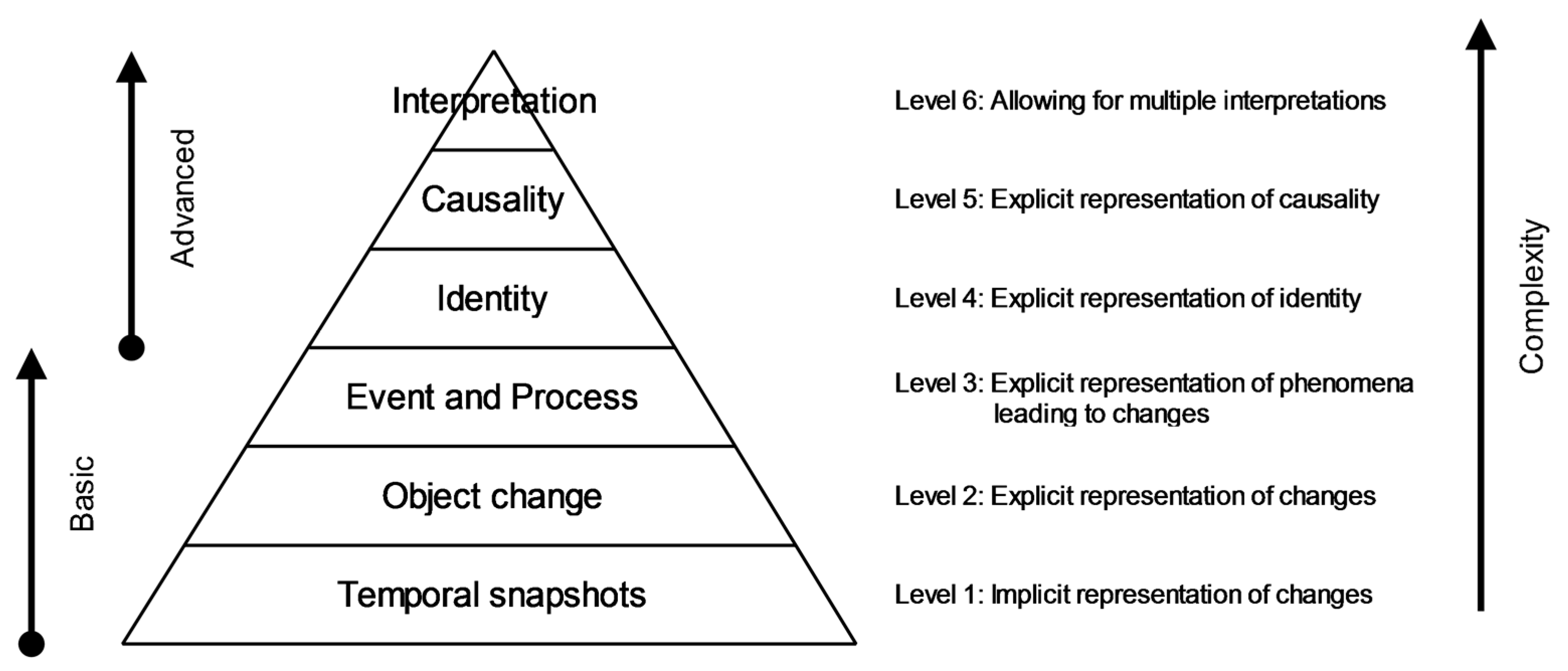

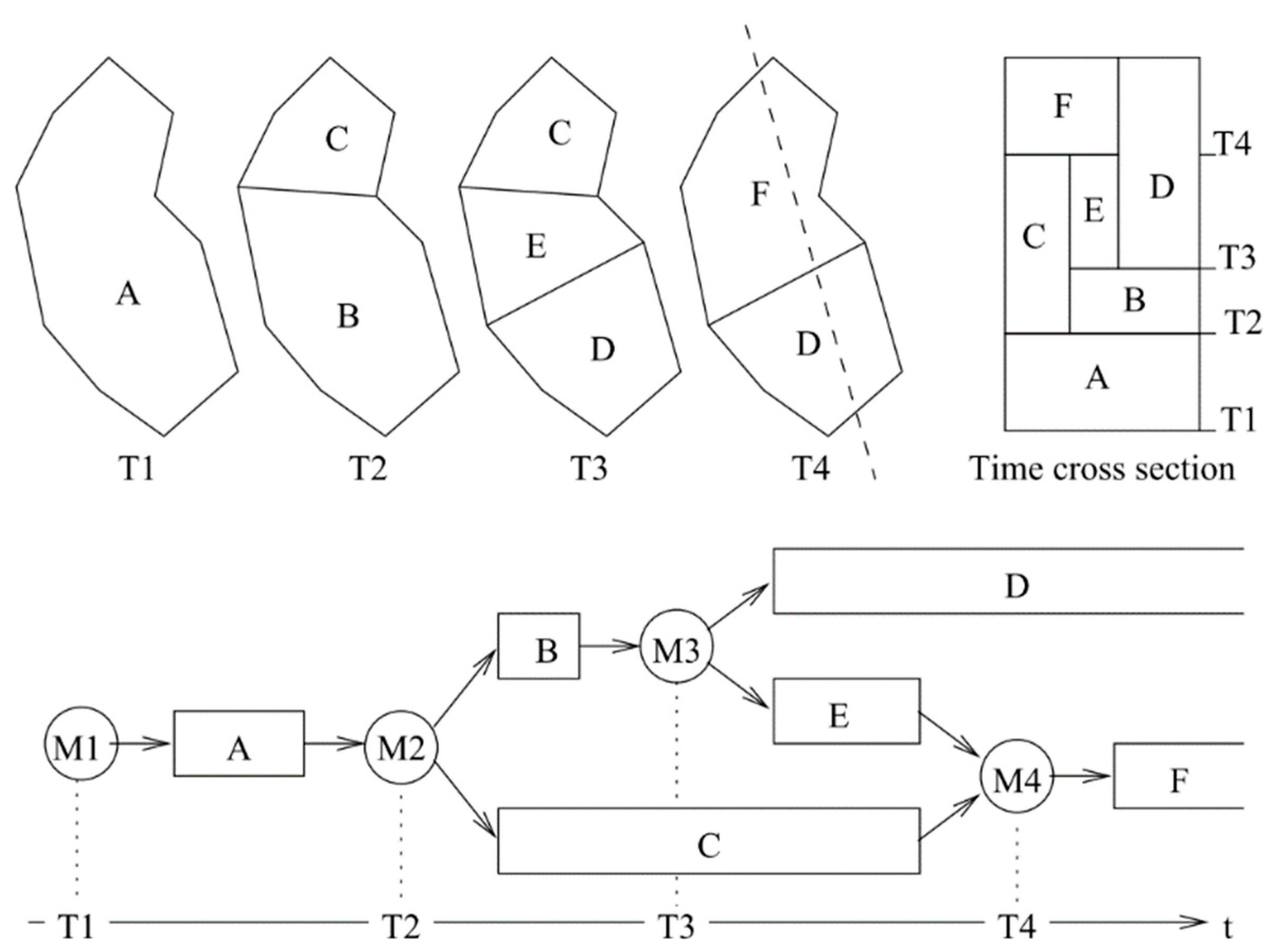

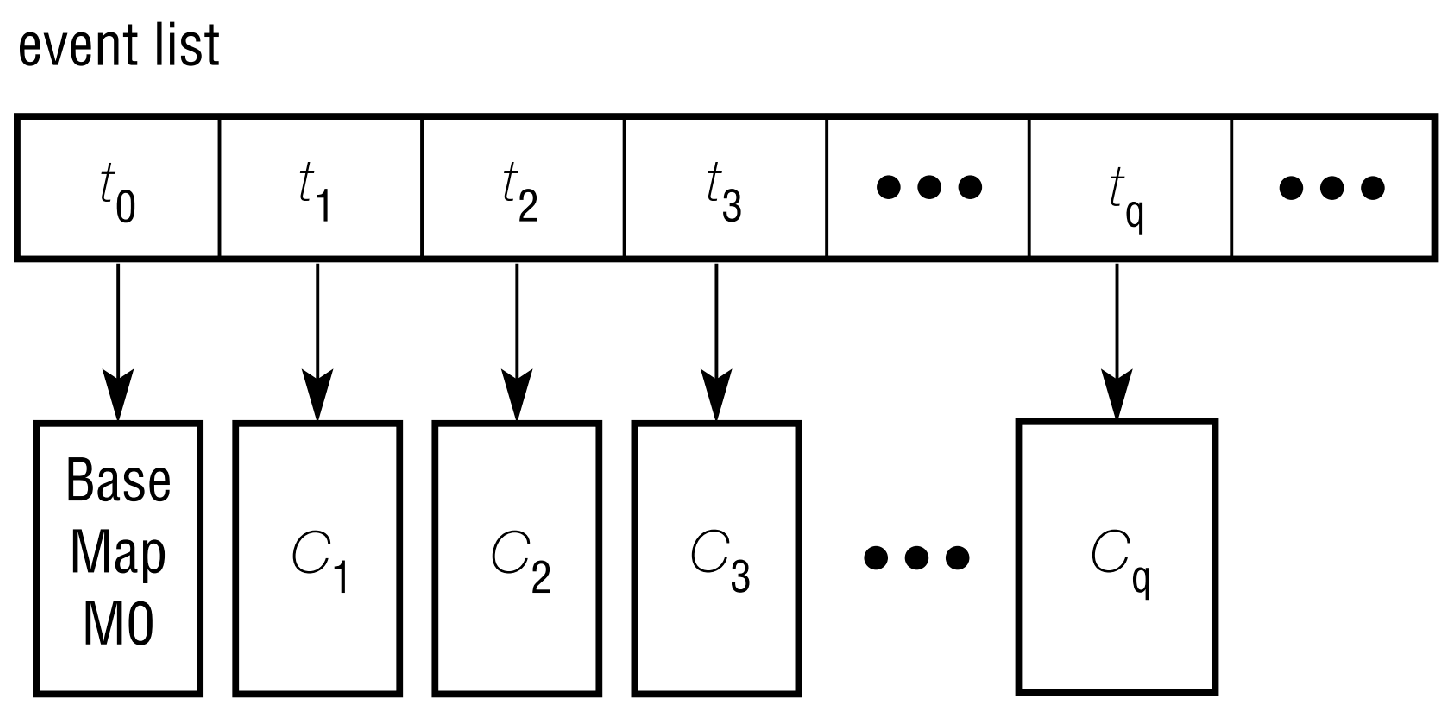

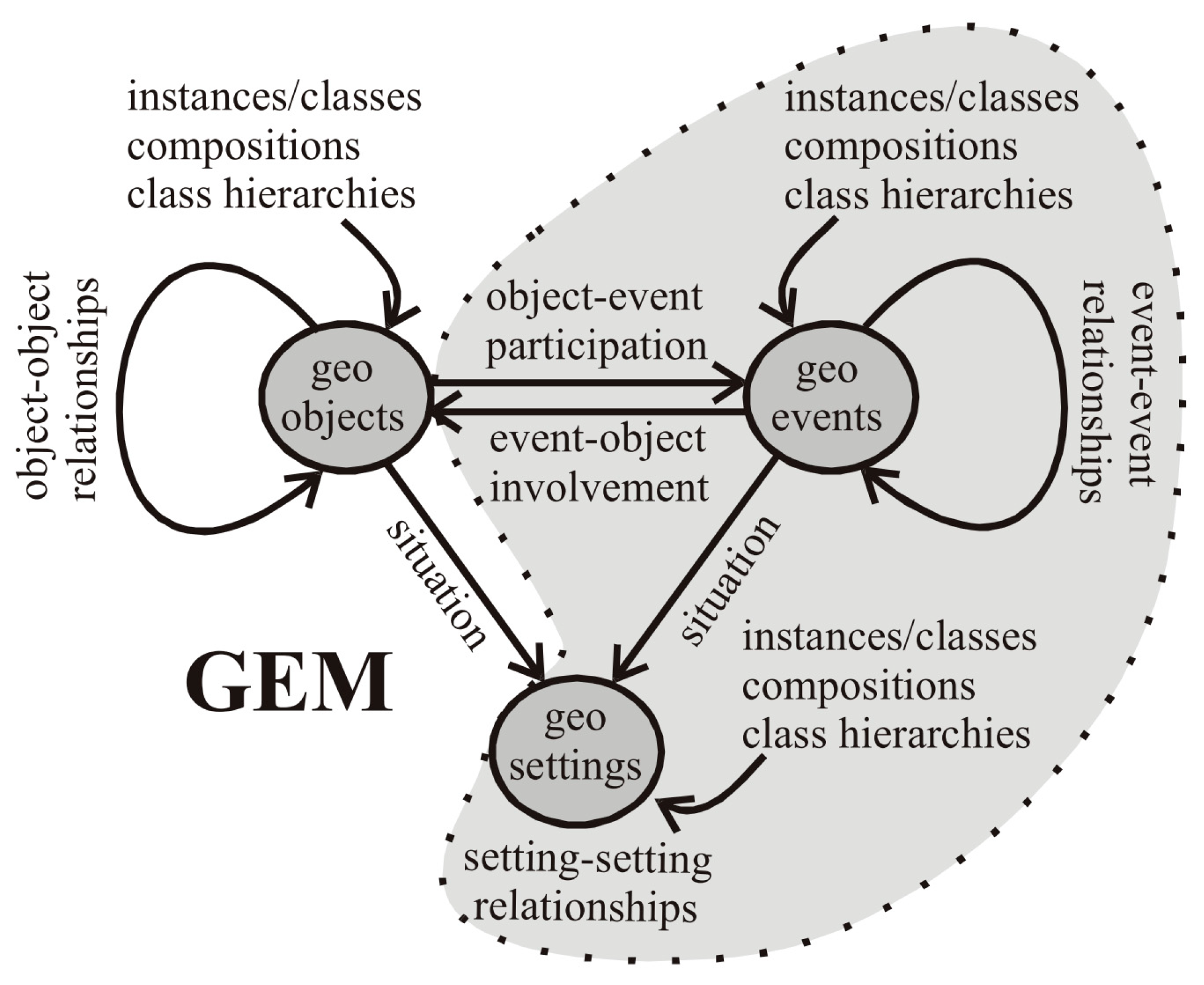


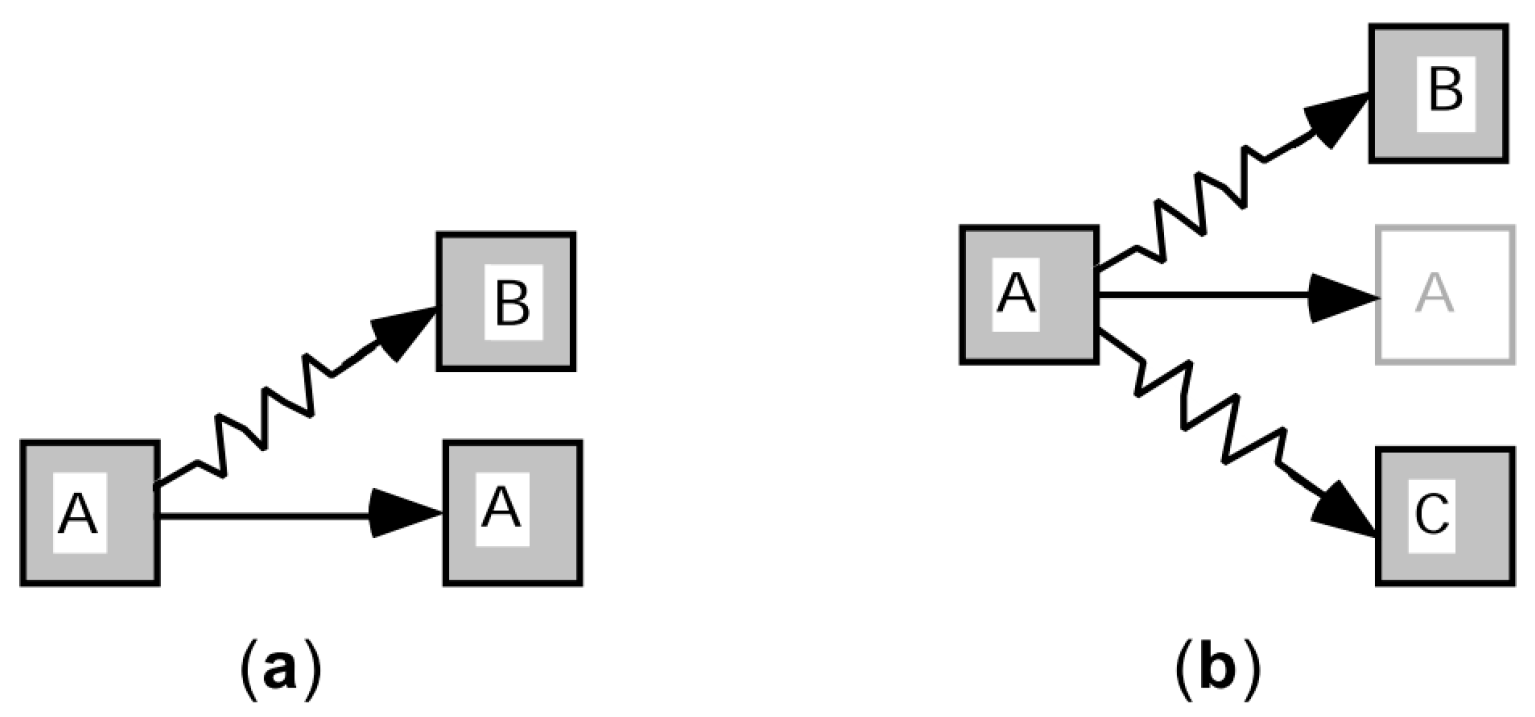
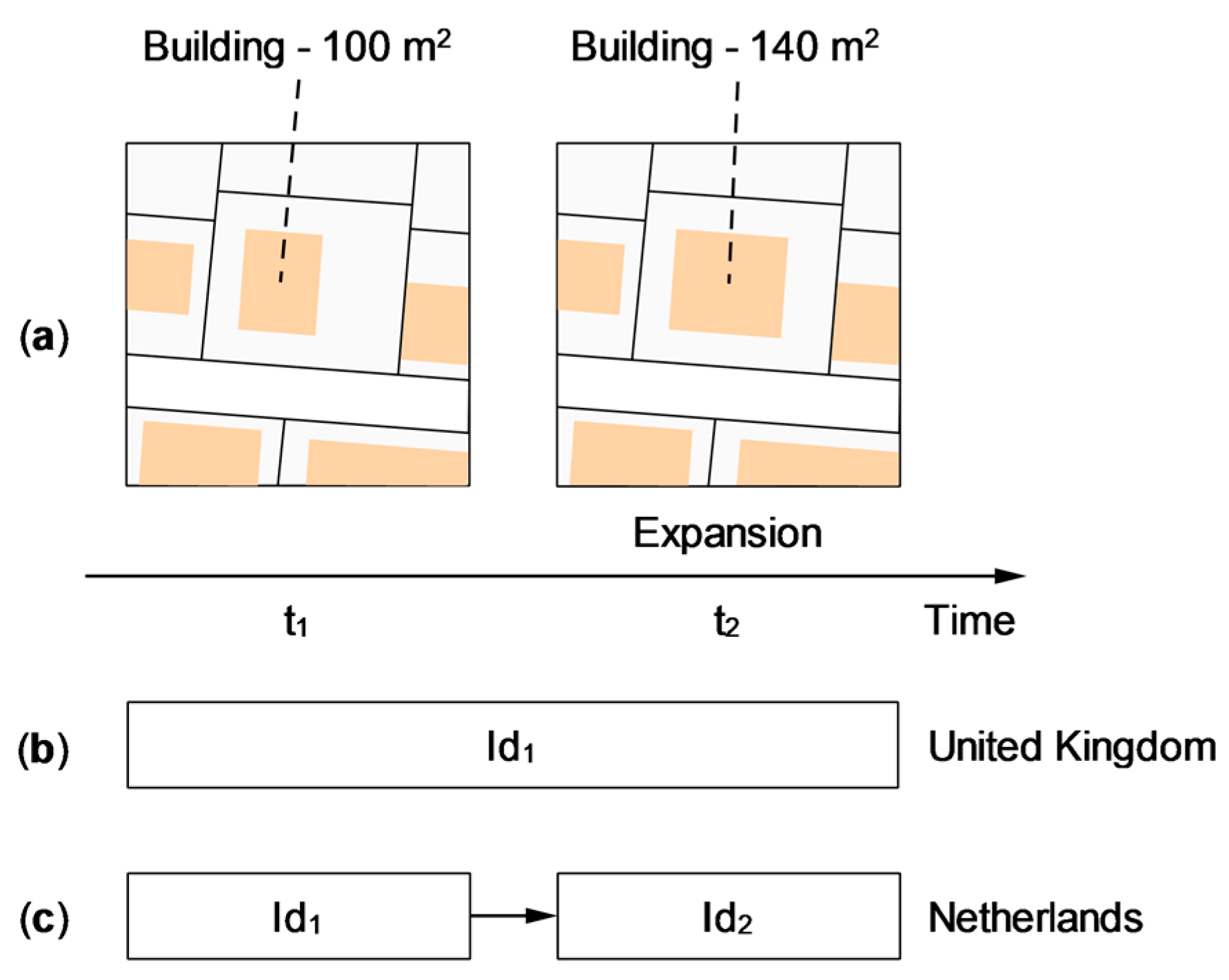


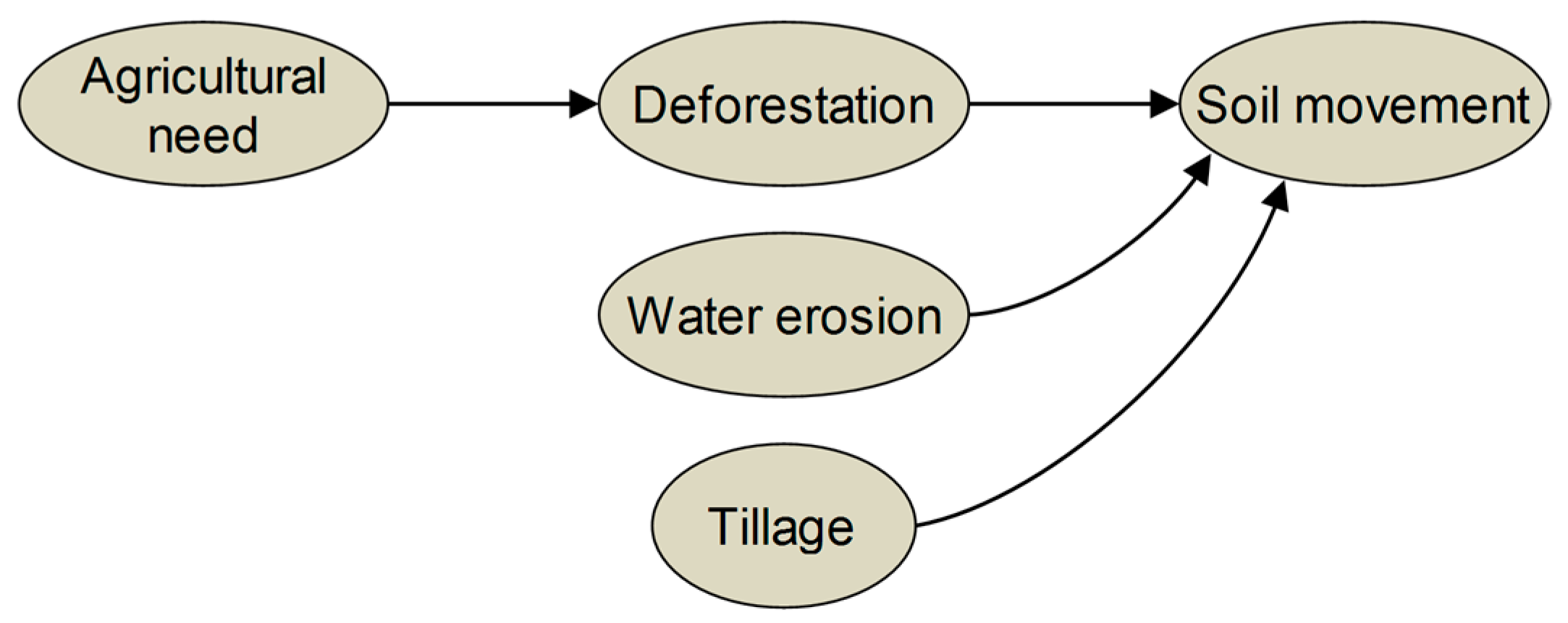
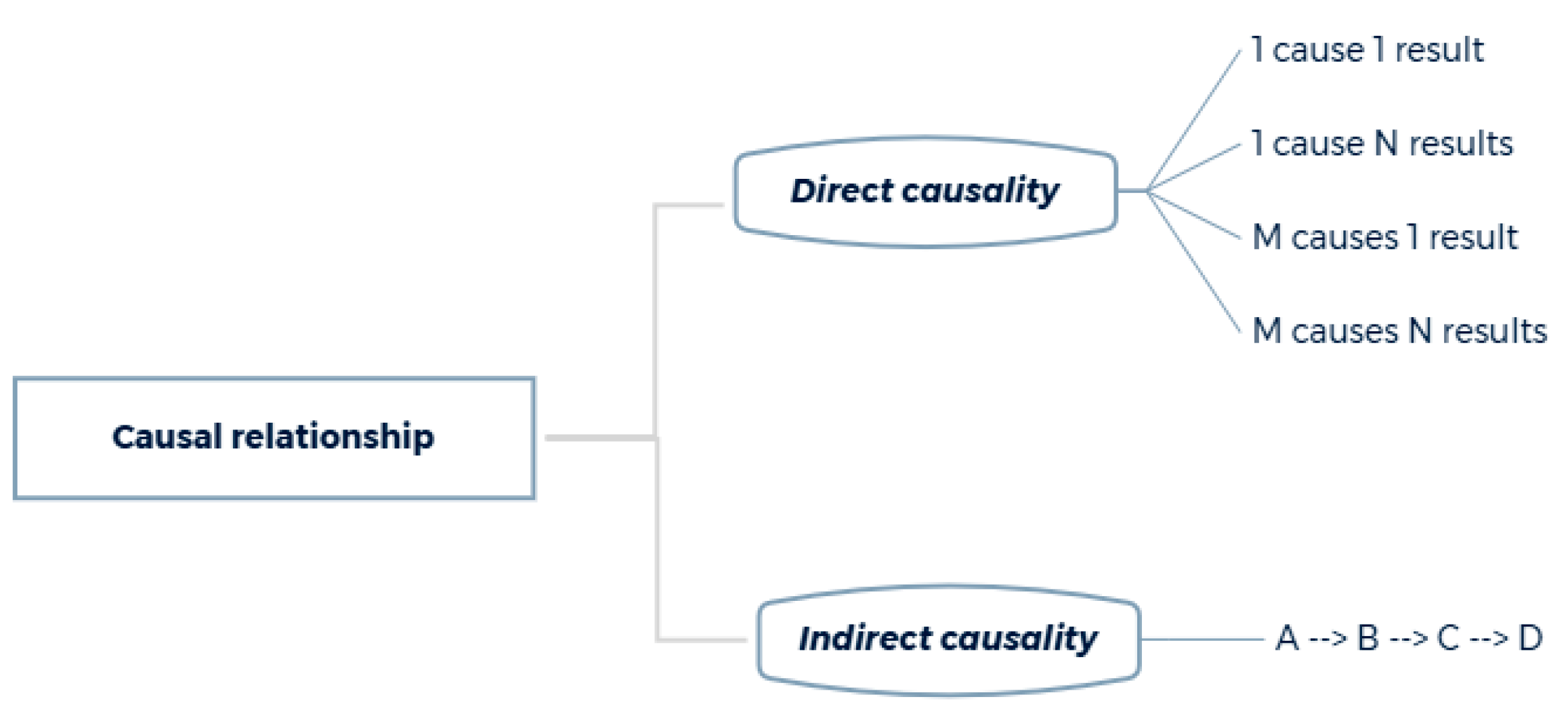
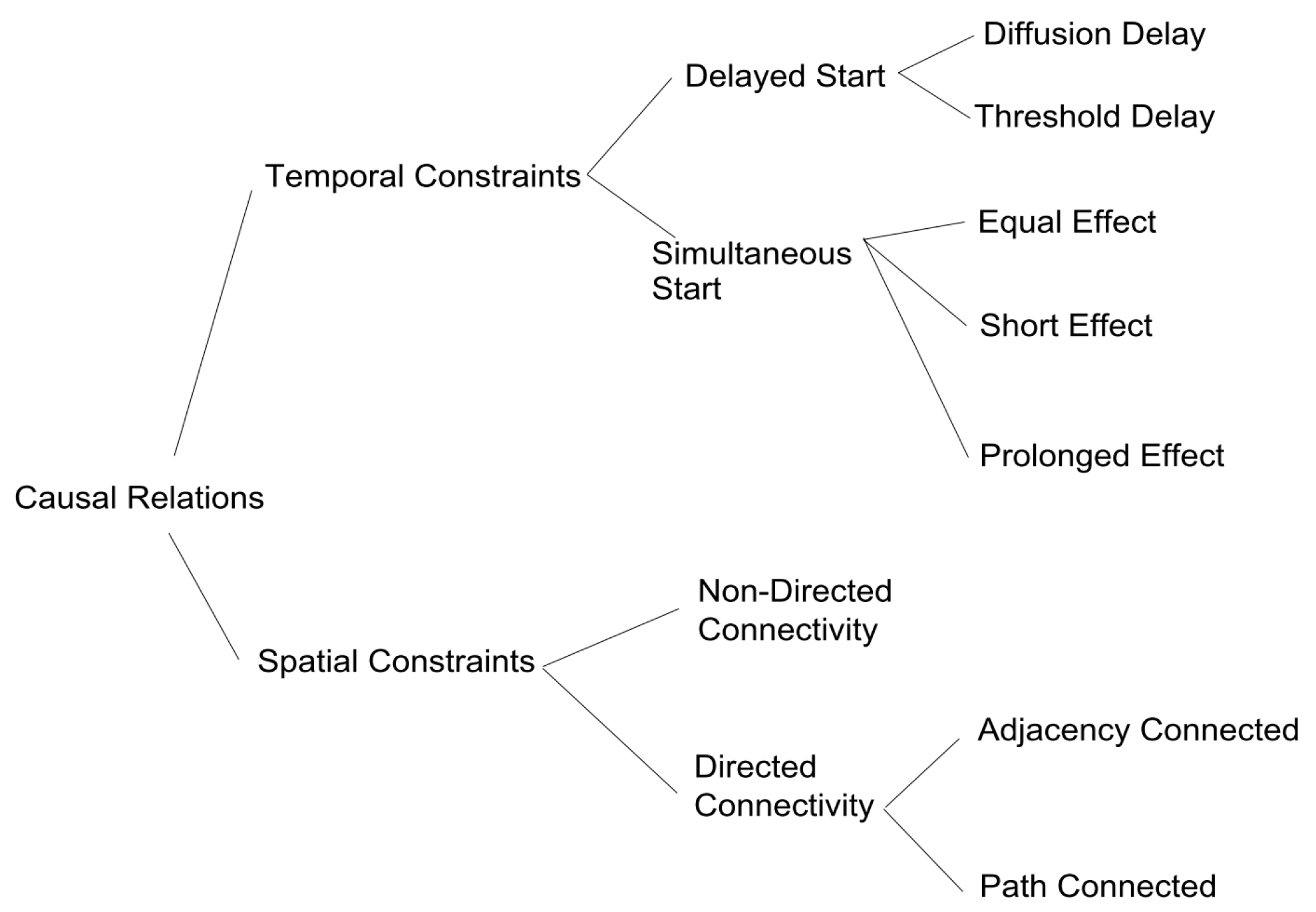

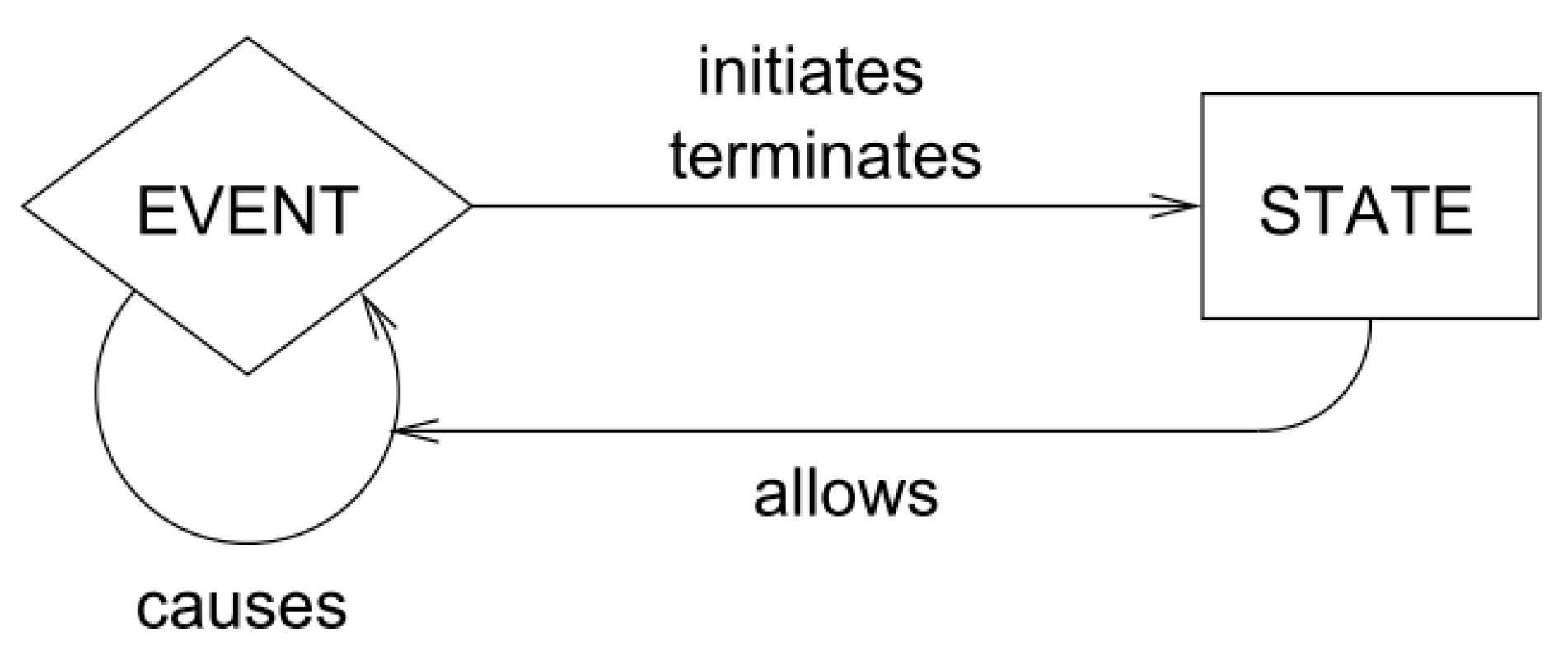
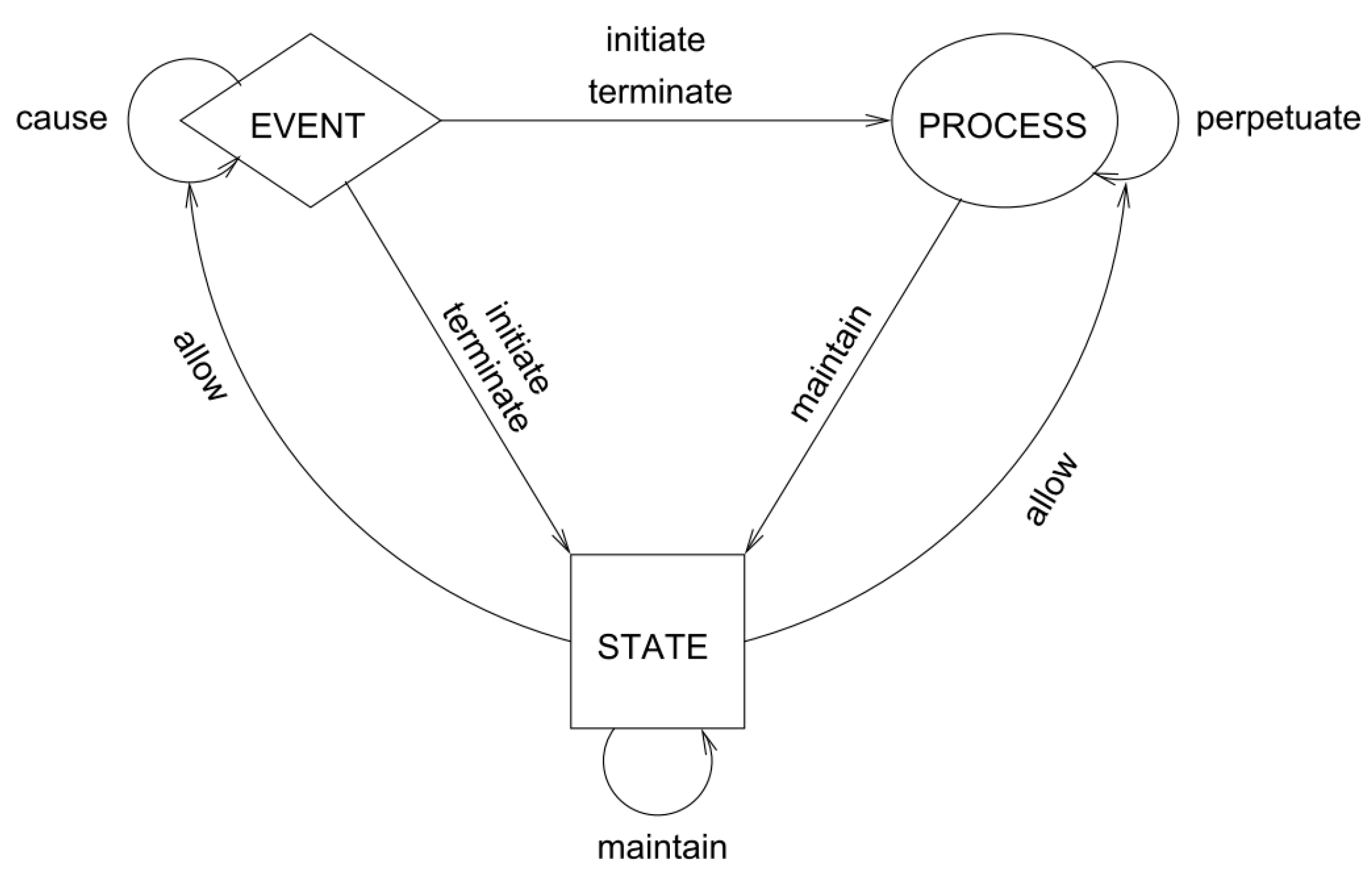
Publisher’s Note: MDPI stays neutral with regard to jurisdictional claims in published maps and institutional affiliations. |
© 2021 by the authors. Licensee MDPI, Basel, Switzerland. This article is an open access article distributed under the terms and conditions of the Creative Commons Attribution (CC BY) license (http://creativecommons.org/licenses/by/4.0/).
Share and Cite
Carré, C.; Hamdani, Y. Pyramidal Framework: Guidance for the Next Generation of GIS Spatial-Temporal Models. ISPRS Int. J. Geo-Inf. 2021, 10, 188. https://doi.org/10.3390/ijgi10030188
Carré C, Hamdani Y. Pyramidal Framework: Guidance for the Next Generation of GIS Spatial-Temporal Models. ISPRS International Journal of Geo-Information. 2021; 10(3):188. https://doi.org/10.3390/ijgi10030188
Chicago/Turabian StyleCarré, Cyril, and Younes Hamdani. 2021. "Pyramidal Framework: Guidance for the Next Generation of GIS Spatial-Temporal Models" ISPRS International Journal of Geo-Information 10, no. 3: 188. https://doi.org/10.3390/ijgi10030188
APA StyleCarré, C., & Hamdani, Y. (2021). Pyramidal Framework: Guidance for the Next Generation of GIS Spatial-Temporal Models. ISPRS International Journal of Geo-Information, 10(3), 188. https://doi.org/10.3390/ijgi10030188






